Le


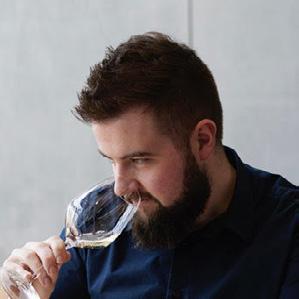
SUSTAINABLE SOMMS

MICHELLE BOUFFARD
The Bitter Taste of Climate Change

APRIL 2024 ISSUE #14
Roi van de Vyver, Joris Garcia, Craig Beattie
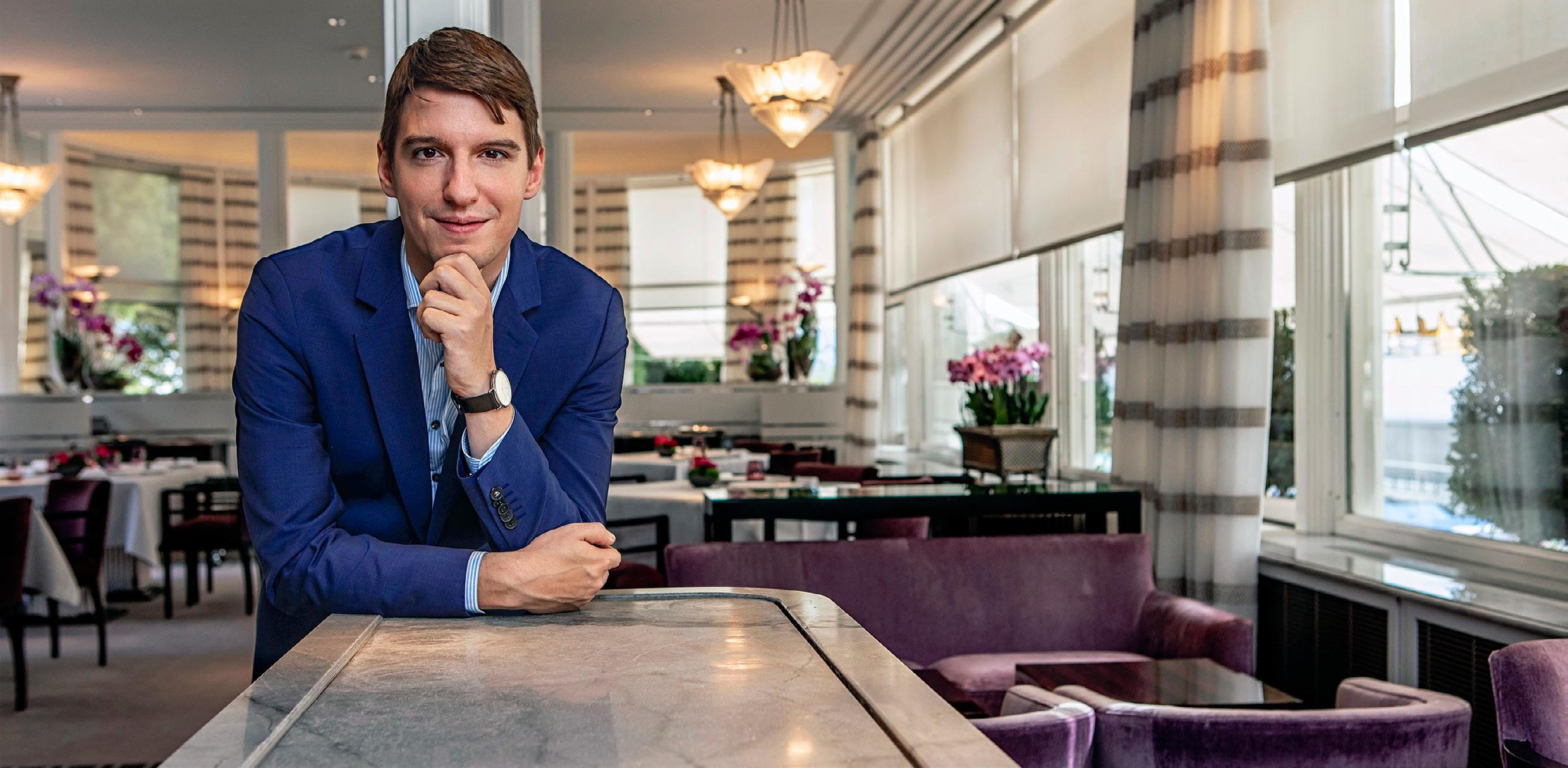
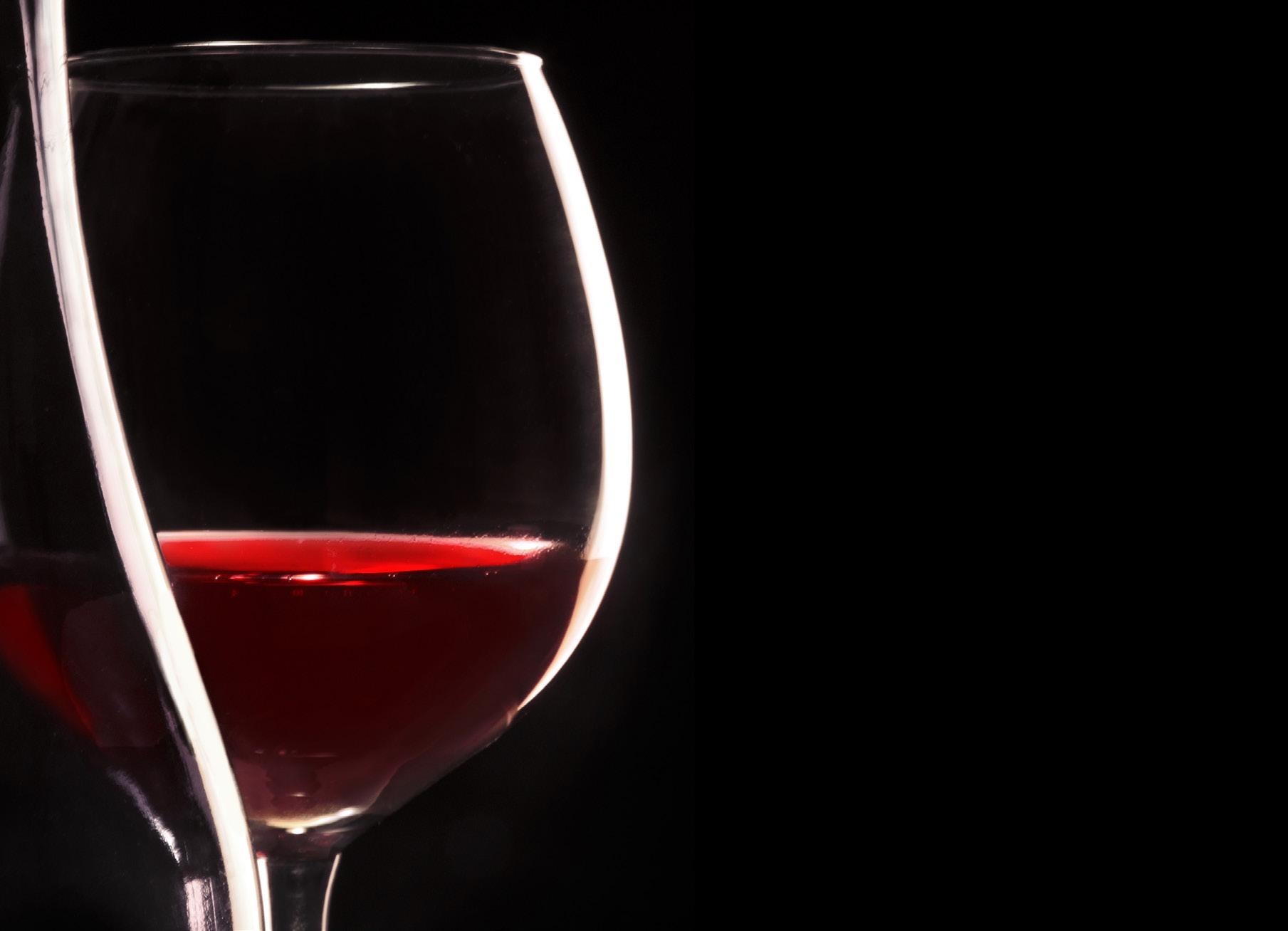

on
MARC ALMERT ON LISTEN TO EPISODE ONE Available


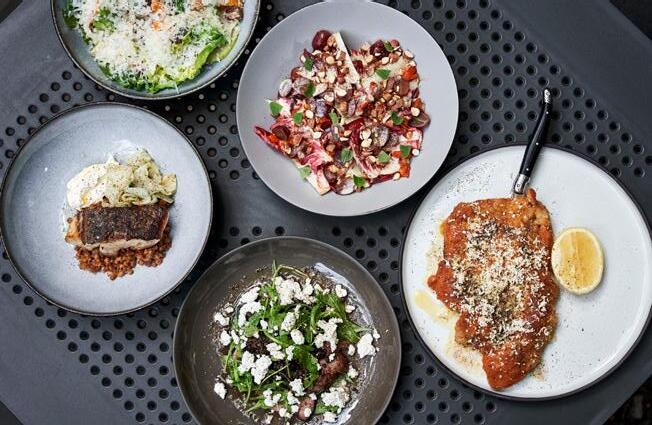
Published by: Association de la Sommellerie Internationale
Editor, Content Manager: Mark DeWolf
Partnership Management: Ana Sofia Oliveira
Marketing & Communication: Xeniya Volosnikova
Administrative Assistant: Claire Monnier
Translation: Michèle Aström Chantôme, Manuel Negrete
Design / Layout: Carissa Botha
Photography: 123RF, Cedric Angeles, Jean Bernard, iStock, Pexels, Unsplash, Gustavo Vivanco
Cover Photo: Sustainable viticulture and wildlife cohabitating
Contributors:
General Inquiries: www.asi.info | info@asi.info click on an article for fast navigation>
Rocío Alvarado, Craig Beattie, Michelle Bouffard, Hugo Córdova, Mark DeWolf, Joris Garcia, Alice Feiring, Mauricio Fernández, Joao Ferreira, Magda Saleh Jacobo, Pascaline Lepeltier, Mariana Martinez, Sebastián Menendez, Jancis Robinson, Le Roi van de Vyver, William Wouters, Beáta Vlnková, Xeniya Volosnikova
ASI Executive Board
President: William Wouters
Secretary General: Beáta Vlnková
Assistant Secretary General: Ivo Dvorak
Treasurer: Philippe Faure-Brac
Assistant Treasurer: Samuil Angelov
Vice-president for Asia & Pacific: Saiko Tamura-Soga
Vice-president for Africa & Middle East: Michèle Aström Chantôme
Vice-president for Europe: Piotr Kamecki
Vice-president for the Americas: Matias Prezioso
Magazine inquiries: Mark DeWolf, ASI Content Manager markdewolf@asi.info
© Association de la Sommellerie Internationale. All rights reserved. No part of this magazine may be reproduced, stored in retrieval systems, or transmitted in any form or by any means without the prior written permission from the publisher.
3 CONTENTS APRIL 2024 ASI MAGAZINE
Welcome!
 William Wouters, President ASI
William Wouters, President ASI
Sustainability Is as Sustainability Does: Actions count more than words
The word ‘sustainability’ has many interpretations and meanings. Yet for all its ambiguity, it is a word that we must embrace and use as a beacon, guiding us forward through the murky waters ahead of us.
Over the past two decades, the world has slowly begun to recognise that we can no longer treat our planet as if it is immune to the impact of our greed, stealing its resources and filling its air with toxic gases. Environmental sustainability is not just a desire, it is a necessity for the future of humanity on this planet. Sommeliers can play their part by supporting, even pushing, the industry to continue to seek solutions to reduce their impact on the environment. In this issue of ASI Magazine, we explore how sommeliers are creating environmentally conscious beverage programmes and extending their environmental stewardship to all aspects of how they run their side of the business.
The question of the container which houses the wines we love is an increasingly important conversation. Are heavy glass bottles the only way to store ‘fine wine’? The wine world is famous for acting slowly, but can we wait any longer for another evolution of packaging? Contributor Jancis Robinson certainly doesn’t think we should use heavy bottles anymore. Guest editor, Michelle Bouffard, acknowledges that the likes of wines such as Domaine de la Romanée-Conti may never move away from glass and cork, but questions why more restaurants can’t serve wines, particularly fresh whites, fruity reds, intended for immediate consumption out of more sustainable packages such as bag in the box or kegs. The issue of sustainability and adaptability isn’t lost on the cork producers. Years of dedicated research and programmes to ensure that cork is part of a circular system, are some of the steps the industry, led by João Rui Ferreira, Secretary General of APCOR (the Portuguese
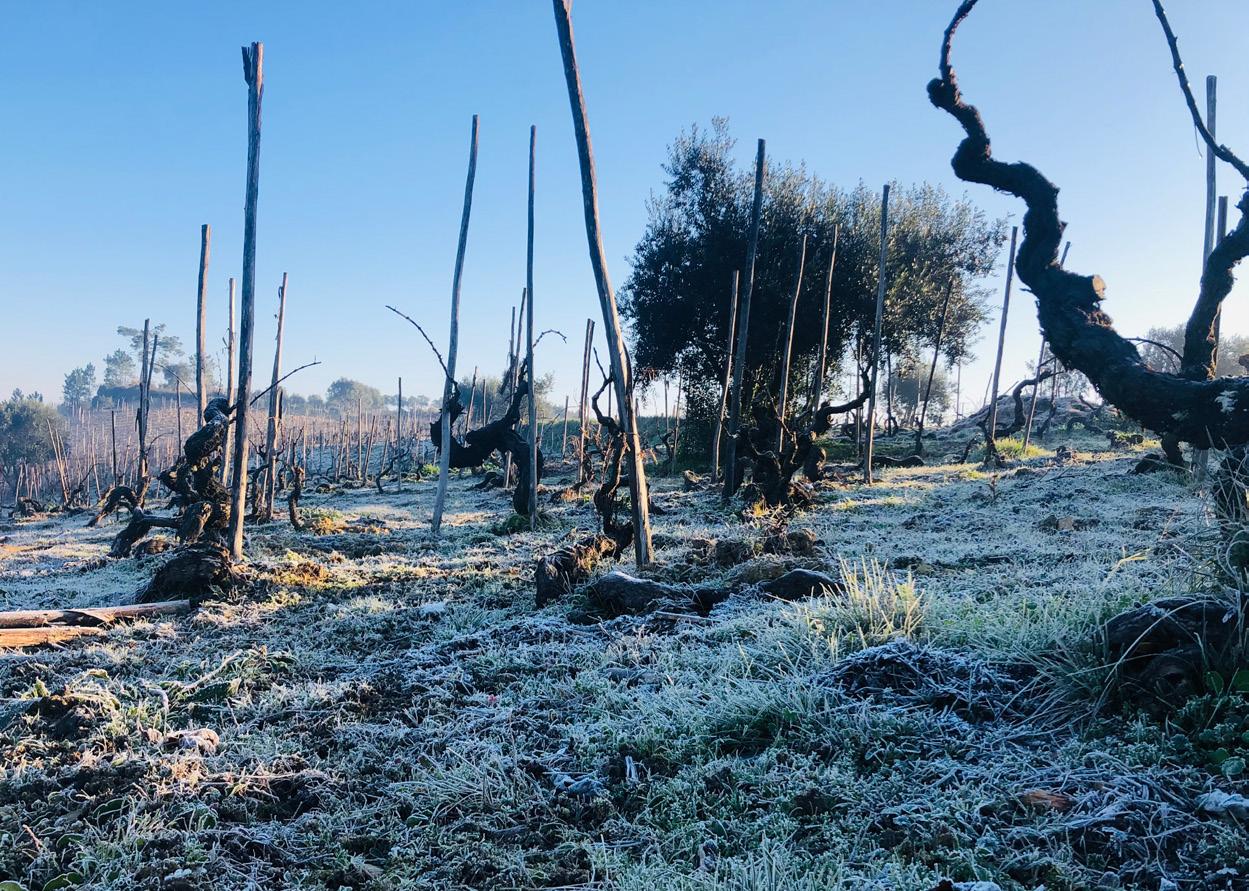
Cork Association) featured in this edition, is using to take an industry producing as carbon positive to new heights of sustainability. In this issue we talk to the experts about the advantages of various types of packaging.
Over the past few years, we’ve seen the concept of sustainability expand to include not only environmentally sustainability but also economic sustainability. B-Corp certification is its gold standard, and wineries who have achieved this designation demonstrate a broad commitment to sustainability. In this issue we applaud those wineries who have made a commitment to this process to ensure their business are completely sustainable.
I encourage you to read this issue, and think about how you as a sommelier, agent, distributor, or retailer can do your part to help our planet and your community.
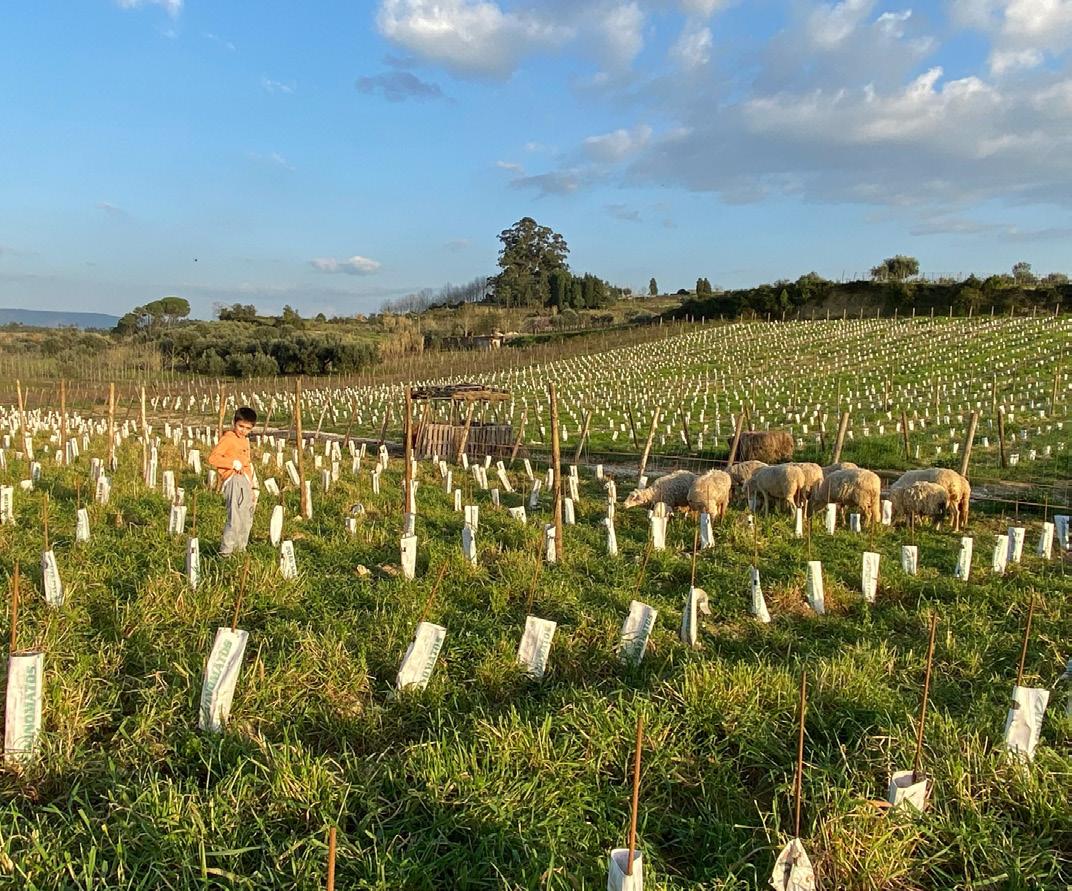 Policulture - Centenary olive trees - Galega
Policulture - Centenary olive trees - Galega
William Wouters, President ASI 4 PRESIDENT’S WELCOME ASI MAGAZINE APRIL 2024
New plantation of Baga


ong. 28 - 30 May 2024

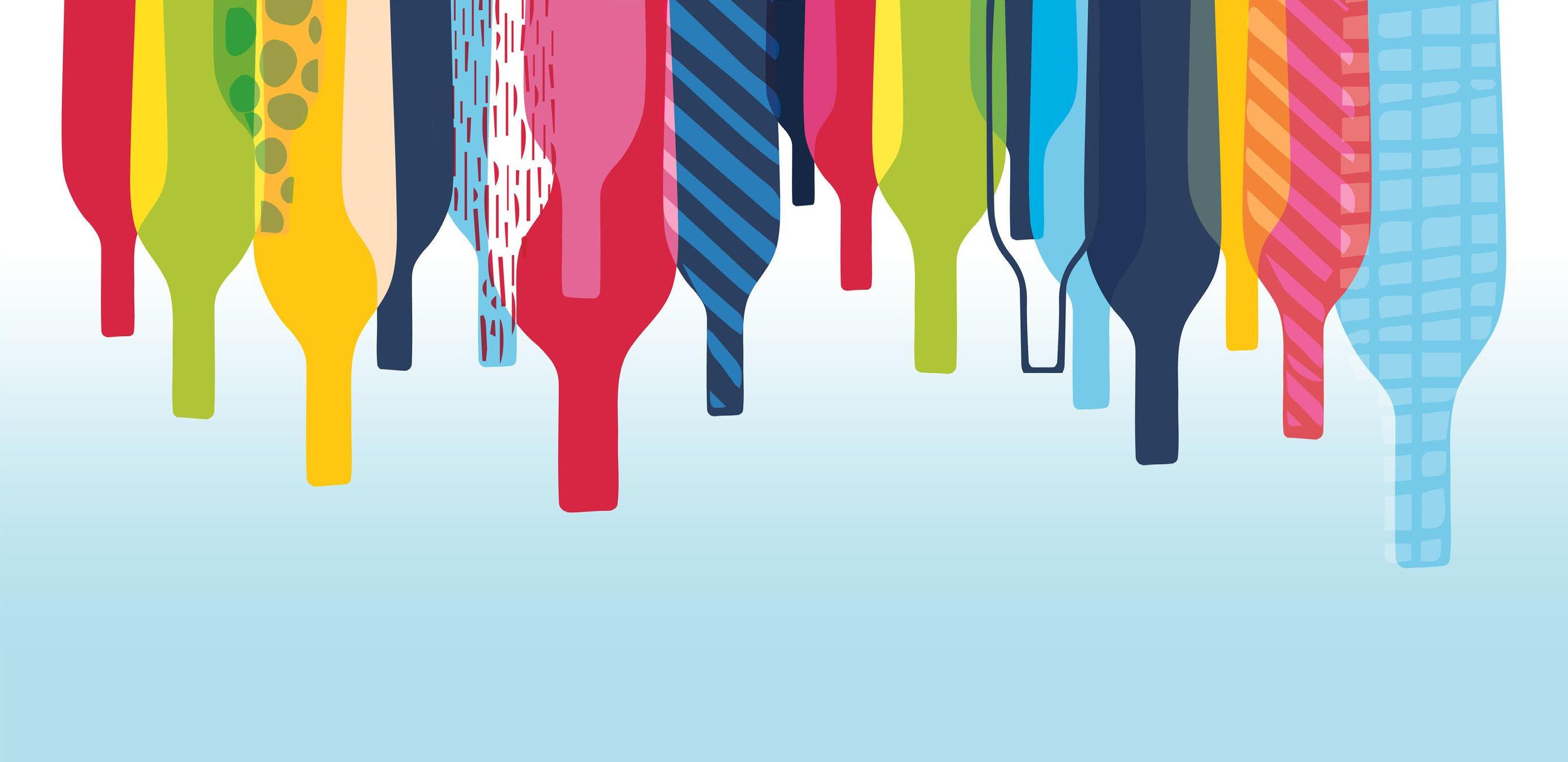

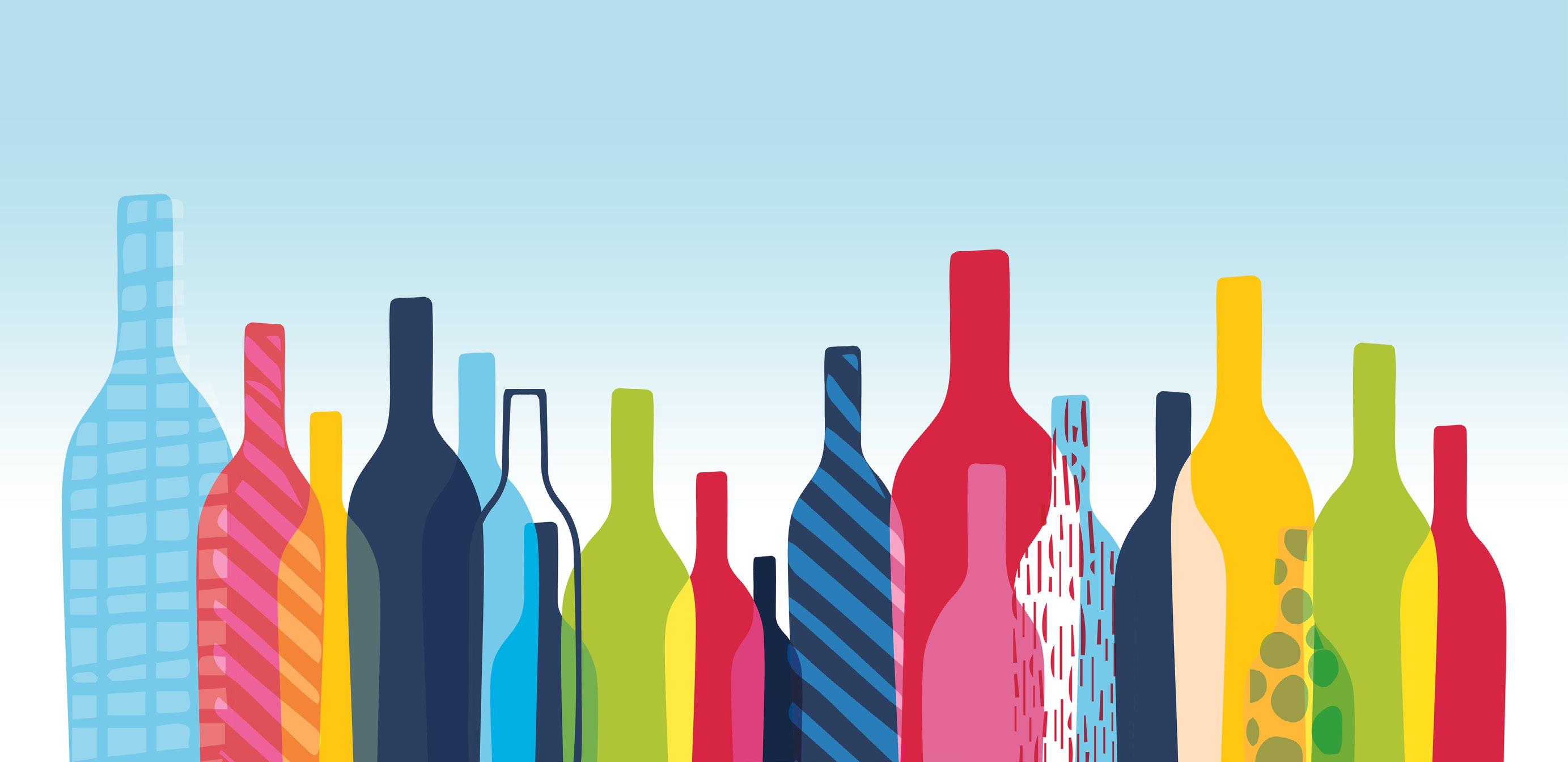
ork. 24 - 25 June 2024
VINEXPO ASIA
INEXPO AMERICA
TO JOIN OUR UPCOMING EVENTS FLASH THIS CODE
Guest Editor



Halting the Bitter Taste of Climate Change: A sommelier’s role
Michelle Bouffard is a Canadian Master of Wine candidate, author of Quel Vin Pour Demain (Which Wine for Tomorrow)? She is a journalist, radio and television personality and the founder of Tasting Climate Change, an international conference that brings the world together to discuss best practices and future solutions to mitigate the wine industry’s impact on the climate.
Michelle Bouffard
with Michelle Bouffard
Halting the Bitter Taste of Climate Change: A sommelier’s role 6 A DISCUSSION WITH... ASI MAGAZINE APRIL 2024
ASI: Why did you create Tasting Climate Change, and what are the main objectives of the conference?
Michelle Bouffard (MB): My interest in the subject of climate change started in 2005, long before, unfortunately, it became the topic of the moment. I had watched a documentary, with Al Gore called ‘An Inconvenient Truth’… it was evident after watching that documentary that this was going to be the biggest challenge, on earth, and, of course, affect the wine industry. At the time I found very little information about it, but when I was talking to producers, who worked with the land every day, they could see a change already taking place. I thought to myself, one day, when I have more knowledge, more connections, in the world, I will gather the top experts to exchange ideas about solutions to adapt to and mitigate against climate change.
ASI: What role can sommeliers play in mitigating the impact of climate change?
MB: Sommeliers have a huge role because at the end of the day, the consumer will turn to them for advice. This is precisely why when I do the conference, I like to put everyone in the same room so that everyone is aware of the reality of the other, so that the sommelier understands the challenges of the producers and vice versa. In the end, the sommelier can leave the conference with some

“The trade, sommeliers, have a big impact on leading trends and influencing consumers.”
knowledge and translate this into a wine list that is reflective of the preoccupation that we should all have. Namely, sustainability.
In terms of what a sommelier can actively do in the restaurant. First, make a conscious buying decision. There’s always going to be a lot of people knocking on your door. Take for example you want to list a new Chardonnay, from California,

for example. Know when you’re in front of so many choices, go with a product that is sustainable, that is made with sustainable practices. Make this a priority in your work. It’s not hard to ask questions, but don’t just trust what the agent, winery representative tells you. Go further and make sure that you are choosing the appropriate producer.
Secondly, find a way to communicate to the consumer in a way that is easy to understand. Surveys, from around the world, clearly demonstrate consumers are interested in and want to make a sustainable purchase. They just don’t know how to.
Certification can play a role in making them feel more convinced about their decision. Organic is the certification they know best, as they are used to buying organic food. If you put a lot of different
Michelle Bouffard and Gérard Bertrand
2024 Tasting Climate Change Conference
7 A DISCUSSION WITH... Halting the Bitter Taste of Climate Change: A sommelier’s role APRIL 2024 ASI MAGAZINE

certifications in front of them, even if they don’t fully understand them, they will think a wine with a sustainable certification is the best choice.
ASI: Are you suggesting that certification plays an important part, not only because it’s somewhat of a guarantee, but also to give consumers confidence?
MB: I think the consumers are lost. If you, as a consumer, have the privilege to be with a sommelier, it’s great because the sommelier will be able to tell you about that wine and how sustainable it is. However, if you’re faced by yourself, or at a restaurant where the sommelier is busy, or there isn’t one, and you need to decide, understanding sustainability via a certification is definitely helpful. The other thing with certification is there’s an audit. I like to believe in the goodness of people and what they tell you is true, but you don’t know what producers do when your back is turned around. Since certifications are audited, it ensures that the producers do what they say they are doing.
There’s certainly pros and cons of certification, and not everything is perfect. We could list the pros and cons of organic, biodynamic, sustainable certification, and none are perfect. Though, I have to say I have a huge preference for regenerative agriculture certification
(ROC), because it encompasses everything, including treating employees correctly. For me, that is the certification of the future.
Another thing a sommelier can do is say ‘No’ to heavy bottles. In 2024, it’s irresponsible for producers to put their wine in a heavy bottle. The bottle weight is responsible for 40 per cent of the carbon footprint of a bottle of a wine. So be open to lighter packaging options. Over 90 per cent of the wines that are purchased are consumed within the first week of purchase. This is also so true for many restaurants, especially for the by the glass selections. Why not have a high-end premium wine in bag and box at the restaurant? There’s a producer in New Zealand who has put premium wine in bag and box and restaurants are selling it. Can you imagine you have this sommelier arriving at your table with a bag in box wine? It creates a conversation with the consumer, and you can educate them about it. I also know some fantastic restaurants that offer wines on tap.
ASI: Do you think sommeliers are behind the times in terms of packaging?
MB: I think it’s the chicken and the egg, but I do think the smart sommelier can use it as a marketing tool, in a very positive way. Can you imagine you are a cool sommelier, at a Michelin-star restaurant, and
“Can you imagine you are a cool sommelier, at a Michelinstar restaurant, and one of your offerings is available in an alternative package.”
one of your offerings is available in an alternative package. How cool is that? You can get the press behind it. Use it and make it yours. I understand that DRC (Domaine de la Romanée-Conti) unfortunately is never going to be available in bulk, or alternative packaging. That’s fine because those wines at this very premium level represent a small percentage of the wine sold. But why not offer fresh, crunchy, white whites meant to drink now, in alternative packaging? I think producers need to get behind it too. When you have a cool producer like Christophe Pacalet in Beaujolais, in bag and box, it gives the sommelier the confidence to also offer these wines. It can start a trend.
Halting the Bitter Taste of Climate Change: A sommelier’s role 8 A DISCUSSION WITH... ASI MAGAZINE APRIL 2024
Speakers at the 2024 Tasting Climate Change Conference
ASI: Do you think we are one prestigious producer away from making a change?
MB: It’s especially true for heavy bottles. The other day I was talking with a producer, who was telling me if I stop selling my premium offering in a wooden case, and put them in lightweight bottles, my competitor, in that same segment will still selling their wine in a wooden box, in heavy bottles. The consumer, unfortunately, still associates quality to packaging. It’s like when you buy your iPhone, a special perfume, or a special watch, it’s going to come in an elaborate package. I think that luxury is associated with premium packaging. So, I think if producers that are making very premium wine start saying collectively, we’re going to stop using wooden boxes or heavy bottles, it will become the new, normal.
ASI: Can sommeliers be part of leading the change?
MB: Absolutely. And I always like to say the consumer did not wake up one day saying, I want orange wine and I want natural wine. The wine trade, sommeliers, told them about those wines, and they liked them, but they did not discover that by a chance. The trade, sommeliers, have a big impact on leading trends and influencing consumers.
ASI: Speaking to transportation, how can sommeliers balance that kind of desire to minimise that transportation and keeping wine lists interesting?
MB: It depends where you live. If you are lucky enough to live in a producing wine region, it’s easier. If you are in a city far away from wine or vines, it’s going to be a bit more difficult to have local products. If you are lucky enough to live in an area that produce wine, yes, I think that to have a high percentage of local wine on your list is great.
If not, then I think it’s the accumulation of actions that you take. Choose producers that are working sustainably. Say no to wines packaged in heavy bottles. I hope also, with time, we’ll see more alternative packaging, and wines bottled in market. I think we’ve come to associate bulk wine to high-volume, poor-quality wine. There’s a way that we could change that because we do have the technology now and the quality of bottling lines and bottlers ensure that when the wine arrives, at destination, it is bottled in a way that the quality is not compromised, and vice versa when it’s shipped from the producer.
ASI: Climate change has produced climate chaos, which has produced crazy weather events that have made grape growing particularly challenging, especially in northern climates. As sommeliers should we be more open to serving fermented beverages other than wine. MB: It depends where you are because the reality is different in different regions. That said, I think we’re seeing the effects of this. For example, there will be no 2024 vintage from British Columbia (Canada). Many of those wineries will need to come up with creative ideas, such as making cider or co-fermented product. Dierdri Heekin from Domaine La Garagista in Vermont, who has a big following of sommeliers, has been great at that. Not only does she produce hybrids that are suited to the climates, but she also coferments with other fruits. Part of the logic is to have permaculture, and more biodiversity. This allows winegrowers in challenging locales to survive and be sustainable. So, yes, support those producers who are making other beverages.

9 A DISCUSSION WITH... Halting the Bitter Taste of Climate Change: A sommelier’s role APRIL 2024 ASI MAGAZINE

Artificial intelligence (AI) has found its place at the vintner’s table, steering the production of Wine of Moldova’s first AI-crafted wine. This initiative has leveraged AI to refine decision-making throughout the winemaking process, from vineyard condition analysis to the orchestration of final blends, labels, and marketing strategies. In the cellars, AI guided through the fermentation process and blending ratios to best showcase the unique qualities of native Moldovan grapes. A key innovation is the introduction of Chelaris, a meta-human winemaker, integrated into every aspect of AI wine production in Moldova.
This fusion of traditional craftsmanship and AI has yielded a white blend of Feteasca Alba, Feteasca Regala, and Viorica, named Elysium, alongside a red Feteasca Neagra assemblage, dubbed Rubrum Aeon. These wines encapsulate not only the rich terroir of Moldova but also its bold journey into the future.
The reveal occurred at this year’s ProWein, attracting hundreds over the three-day event to explore and taste at a masterclass led by consultant and author Robert Joseph. Participants caught a glimpse into oenology’s future, where human skill and AI converge. In-person and online polls showed a 60% preference for traditionally made wines, especially among older generations, underscoring a deep-rooted connection to Moldovan winemaking heritage.
The integration of AI in winemaking ignited extensive dialogue, revealing a generational split. Younger attendees, particularly from Generation Z and millennials, saw AI as an exciting frontier. Meanwhile, older participants harboured hopes that “AI will not replace humans,” spotlighting a compelling debate over the balance between technological adoption and preserving winemaking’s human element.


In the wine world, sommeliers remain irreplaceable, with AI enhancing rather than threatening their expertise. In ventures like Wine of Moldova’s, AI serves as an aid to precision and consistency, but it won’t replace the human sensory experience and the art of storytelling that are the sommelier's true craft. While AI can analyze and propose, it lacks the personal nuance a sommelier contributes to the wine journey, their profound pairing knowledge, and the adaptability to cater to individual tastes.

Explore the unique character of Wine of Moldova and the pioneering steps in merging AI with winemaking. Scan the QR code to delve deeper into the world’s first serious AI wine.
Fine Dining Reimagined: A Sustainable Approach
With Le Roi van de Vyver, Joris Garcia, and Craig Beattie
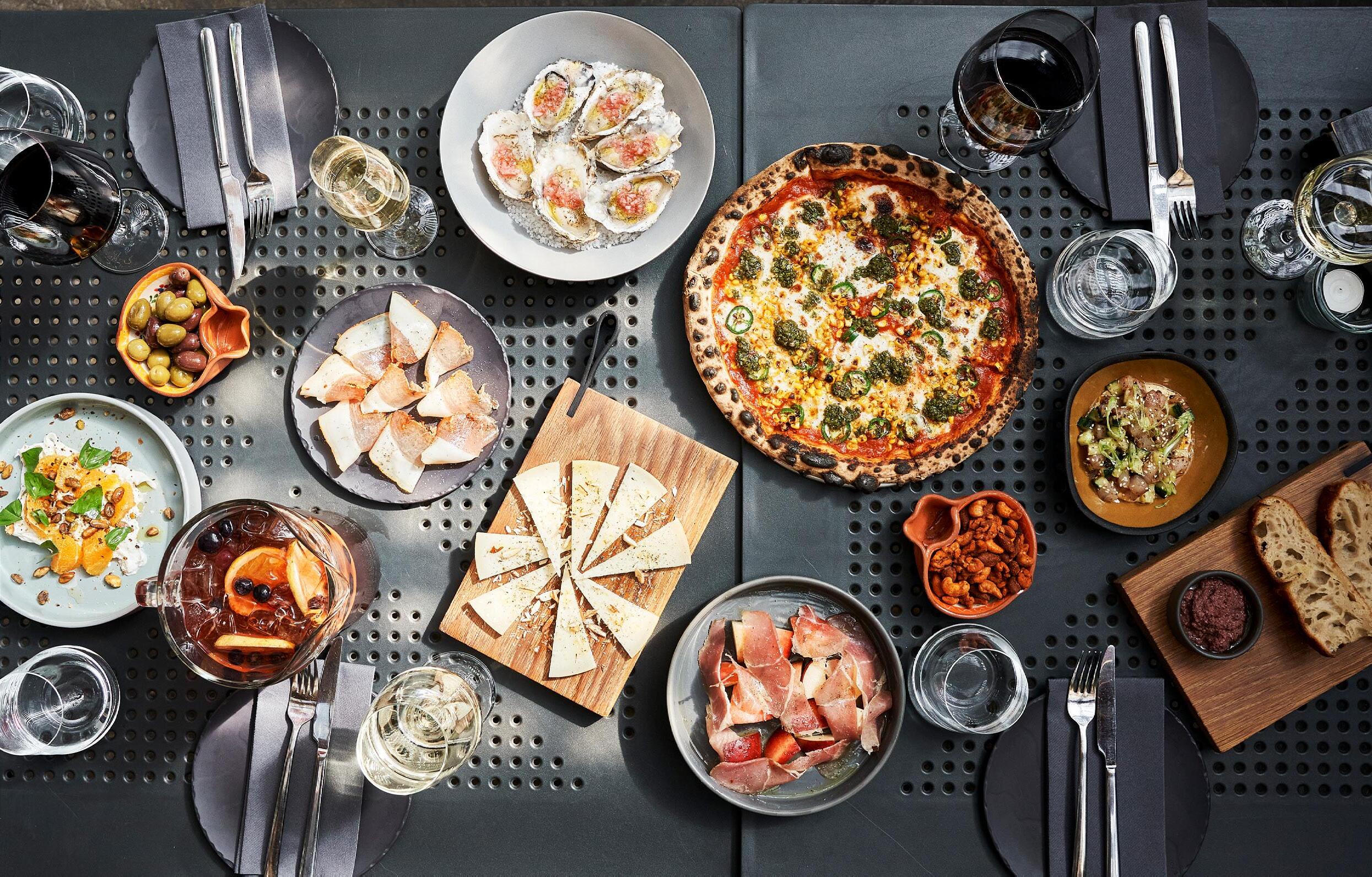
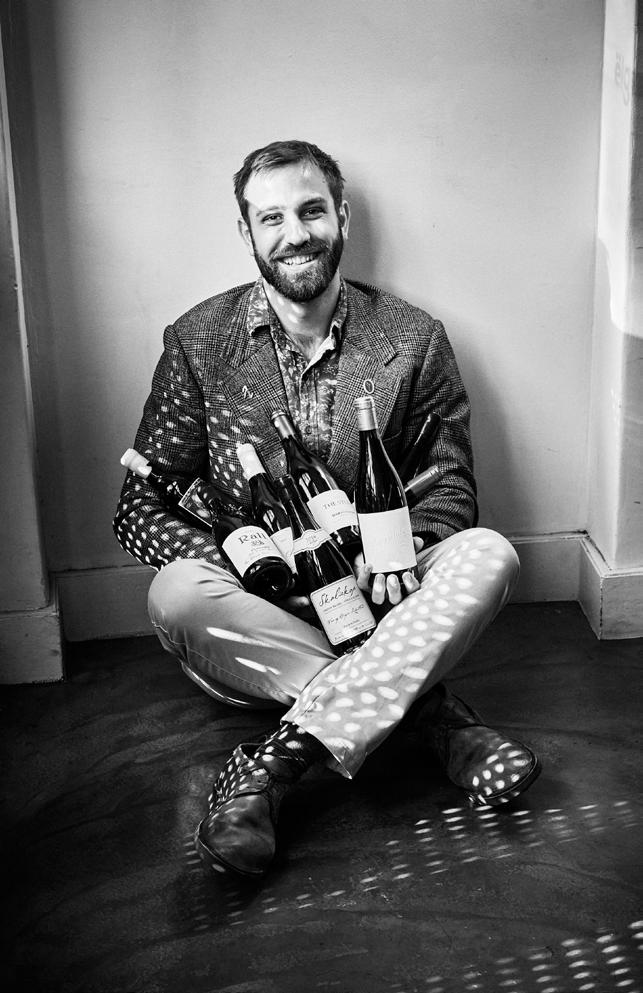
Le Roi van de Vyver is the Sommelier & Wine Director of ëlgr Restaurant, a restaurant whose wine list has been celebrated for its commitment to sustainability, while also being recognized for its depth and strong by the glass programme, despites its modest size. Le Roi was born in a small town in the Northernmost part of South Africa, but his love for wine as a young boy having his first taste of Vin de Constance, the most famous sweet wine from the country. Since that first sip he has had a growing passion for the wine industry. While finishing his bachelor’s degree in Botany and Geology, he completed his WSET level 3 with Michael Fridjhon’s Wine Judging Academy through the University of Cape Town Graduate School of Business. After having worked at some of the best wineries in South Africa he found his outlet for his love of wine as a sommelier. Le Roi has reached international acclaim for his wine selection, working at one of the best restaurants in the country, ëlgr restaurant in Cape Town.

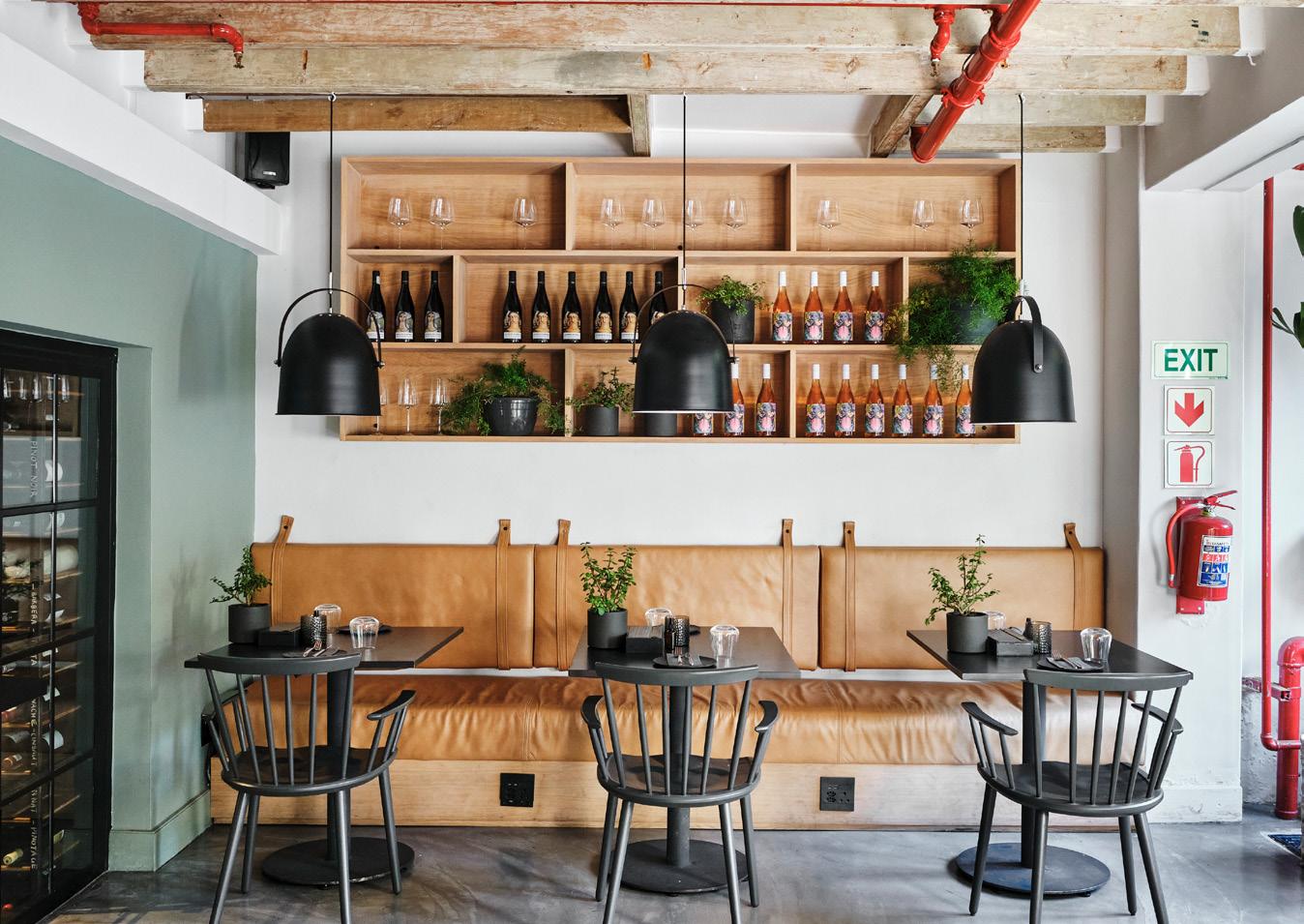 Le Roi van de Vyver
Le Roi van de Vyver
11 Fine Dining Reimagined: A Sustainable Approach FEATURE ARTICLE APRIL 2024 ASI MAGAZINE
ëlgr Restaurant
Joris Gutierrez Garcia, at only 31 has already gained 15 years of experience in the restaurant industry. In this time, he has made significant strides in the industry working at establishments such as Montréal’s El Zaziummm and Club Chasse et Pêche. His journey took a pivotal turn in 2013 while working at Au Pied de Cochon, a rural gastronomic destination, an hour outside of Montreal, leading him to pursue sommelier studies at ITHQ (Institut de Tourisme et d’Hôtellerie), where his curiosity blossomed into a deep passion for wine. This past November, at a competition held in Halifax, he won the title of Best Sommelier of Canada which qualifies him for the 2025 ASI Best Sommelier of the Americas Contest, and 2026 ASI Best Sommelier of the World.
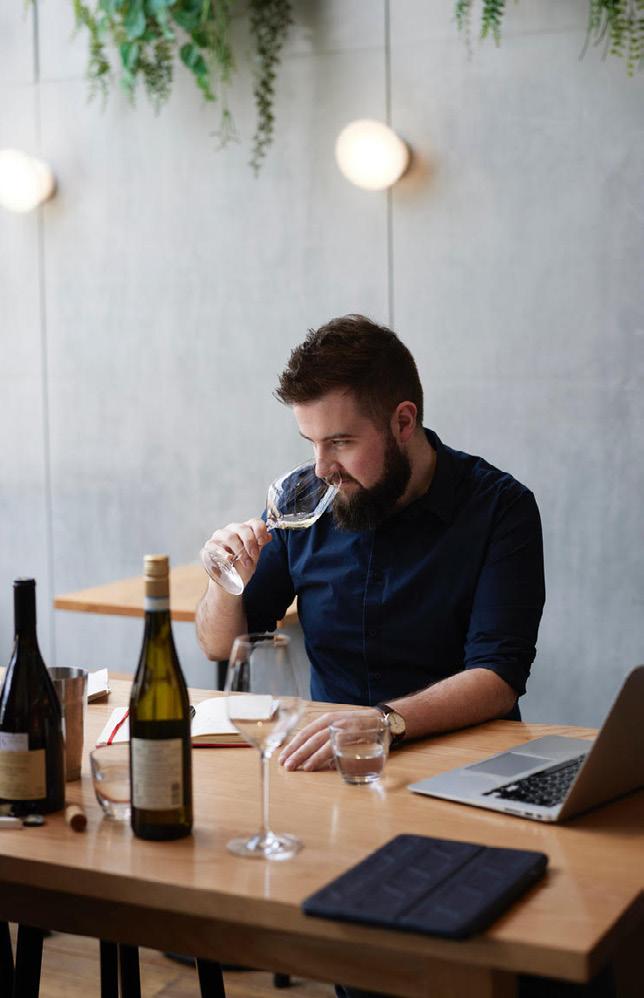


Craig Beattie is the sommelier at Auckland, New Zealand’s, Hello Beasty, led by Chef Stuart Regan. Beattie landed there in 2019, following time spent in Australia, where he gained a passion and love for wine while exploring, and drinking, his way through several wine regions including Margaret River, Barossa Valley, and Adalaide Hills. Hello Beasty is best described as an Asian Fusion Restaurant taking inspiration from Japan, Korea, China, and New Zealand. In terms of its beverage programme, on the wine list they place emphasis on smaller New Zealand producers that work using organic and biodynamic practices. These listings are supplemented by some benchmark comparisons from the Old World. Of the list Beattie says, “we really enjoy introducing people to some smaller producers that they might not ever have come across, through listings or by producer showcases. We asked Beattie for his thoughts on crafting a beverage programme that balances creativity, diversity, and sustainability.
 Joris Gutierrez Garcia
Craig Beattie
Hello Beasty Kitchen
Joris Gutierrez Garcia
Craig Beattie
Hello Beasty Kitchen
Fine Dining Reimagined: A Sustainable Approach 12 FEATURE ARTICLE ASI MAGAZINE APRIL 2024
Hello Beasty Restaurant
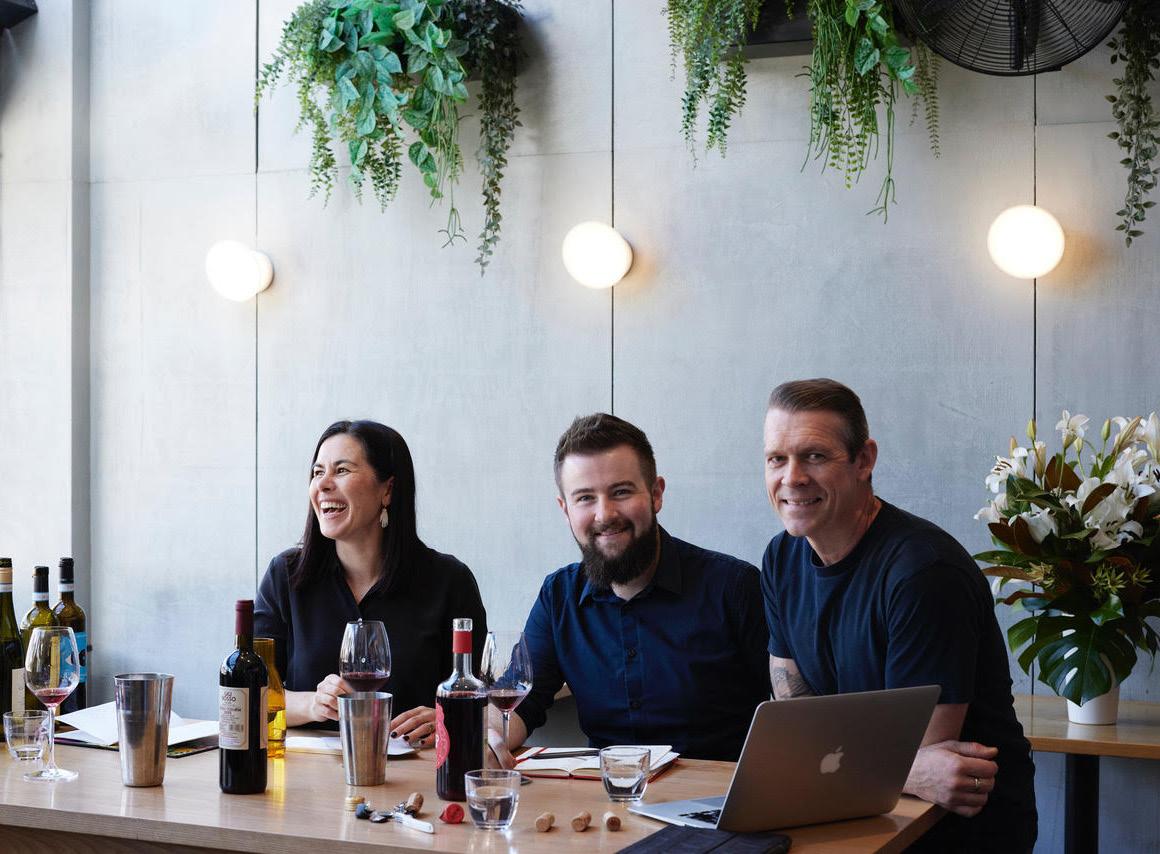
ASI: In terms of making sustainable wine selections what guides your process? Do you look for certifications?
Le Roi van de Vyver (LRV): I think it always comes down to the people. What is the ethos of the winegrower? How do they treat their vineyards? If they have a certification, that is always a bonus. I see certification like those stickers that they put onto bottles that certifies it as vegan friendly, for example, as even though most wines these days are vegan friendly, without having the sticker. There are a lot of practices that happen at the farms, such as trying to minimise runoff of water, using certain mulches in the vineyards, using solar power in the vineyards, looking after the farm workers, supporting the community that don’t necessarily go into a certification. Even with a sticker, there's still knowledge that must go along with that. If you just see a sticker that says integrity and sustainability, you don't necessarily always know what that means. But, then again, that's kind of what our job is, to explain that information to all the different people coming into the restaurant.
In South Africa we're very lucky we have a certification, the integrity and sustainability seal. More than 90 per cent of our wines are
“We are blessed that South Africa is a front runner of sustainability, so that makes my job a bit easier.”
– Le Roi van de Vyver
certified as that. The idea behind it is, provide a good wage for people on the farms, for looking after the vineyards now and for future generations, and for putting certain practices in during winemaking. We are blessed that South Africa is a front runner of sustainability, so that makes my job a bit easier.
Joris Garcia (JG): I don’t look specifically for a specific stamp, although I try to choose wines produced using organic or biodynamic methods. The European Union organic logo and the Demeter Certified are certifications I do admire. That said, I spend most of the time on the
producer’s website, to understand their philosophy, and then I ask as many questions as possible to their agents to ascertain the truth of the winery’s vision.
It can be challenging to judge ‘how sustainable’ a winery is. I am not a scientist. For instance, is tilling good because it reduces your need for herbicides or is bad because it releases CO2 that otherwise is captured in the soil? Which is better for the planet? I can't answer that. I must go with my instincts about the producer.
Craig Beattie (CB): I think guests are becoming more aware about sustainability in the wine world, where in the past it wasn't even a consideration. Now guests will comment on how light bottles are becoming, ask about vineyard and winemaking practices, etcetera. I believe sommeliers should be equipped with the knowledge on why these practices are better for the environment and more sustainable in the long term and train their team on these issues, and gently guide and educate guests on these issues.
When I am picking wines for the list I will actively look for smaller organic and biodynamic wine producers as this is an emphasis on our list, as these will naturally be more sustainable.
Craig Beattie and co-workers
13 Fine Dining Reimagined: A Sustainable Approach FEATURE ARTICLE APRIL 2024 ASI MAGAZINE
ASI: How do local products play into your sustainability efforts, and reducing your carbon footprint?
LRV: I think it's all about the area that you're situated in. Working at a restaurant in South Africa, it's much easier here, because we are a wine producing country. But, if you're in the middle of the Caribbean and you must import everything by boat, obviously the carbon footprint is going to be a lot more. You must find other ways to be sustainable.
In South Africa we also benefit from having great ciders and some of the best brandy in the world. I don’t think we offer as many of our great small scale brandy producers as we could. We have so many small producers making great quality brandies, but when we get tourists into the restaurant, that's not like a thing they really ask for, nor something we offer enough. It's more about our Pinotage and Chenin Blanc, but of course, we do make the best Chenin Blanc in the world. Sorry to everyone that’s French.
JG: As far as the wines, we do try to offer local options, but I'm not doing a list only of Quebec, Ontario and Nova Scotia wine. I try to offer several local options out of respect for the environment.
Spirits are another way to be a little more sustainable because there are so many great local alternatives compared to the major international brands. I try to have as much Quebec, or Ontario, produced spirits as possible.
We also offer Quebec, the water, both sparkling and still. Although I'd love eventually not to use any bottled water in the restaurant. I think it's illogical to bottle something, use it once, and then throw it away. If we had a perfect recycling system, that would not be a problem, but we know that not everything that goes in the recycle bin ends up being recycled.

CB: That is a very difficult question. I tend to work to the 75:25 local to international rule. Each section of our wine list here at Hello Beasty will have an Old-World option comparison to satisfy all guests with the diversity and intrigue they seek. Will also apply this concept of diversity intrigue to our New Zealand selection, as there are a multitude of amazing wine regions throughout New Zealand. This allows us, for example, to feature New Zealand Pinot Noir not just from Central Otago. There are also great expressions from the likes of Martinborough and Marlborough.
ASI: What other things are you doing to be more sustainable, environmentally conscious?
LRV: Jesper (Chef Jesper Nillson) is Swedish. Jesper and his family moved here about eleven years
ago. As such, a lot of his practices come from an international concept of using as much as you can. It’s not only environmentally conscious, but also a good business practice. If, I have some wine that has started to oxidise, it's good practice to use it to make a vinegar for the bar or for the kitchen. Vice versa, if the kitchen uses a bunch of oranges and a bunch of limes for dishes, obviously it's great business practice to dehydrate those and use them for making garnishes for the bar. At the end of the day, it's basically just good business practice to use all these things and reuse and recycle, as much as you can.
CB: We are always trying to have as little impact on the environment as possible and have done this in multiple ways. A big one I have just introduced is the Eco Spirits for Batching some of our cocktails, Eco Spirits is a company that provides spirits in larger volumes (4.5L) than the traditional 700 ml bottle. This is great for batching cocktails as you are using larger volumes anyway. They provide your spirits in a single use Eco Tote (4.5L) then once you have finished with it pick it back up, clean it and refill it for you. This drastically reduces the carbon footprint as compared to using single use glass bottles. The wine industry has something to learn here but again it would face the problem of acceptance. Additionally, we always work closely with our chefs to use as much of our produce as possible and in various ways.
“We are always trying to have as little impact on the environment as possible and have done this in multiple ways.”
– Craig Beattie
ëlgr Restaurant Chef and Somm
Fine Dining Reimagined: A Sustainable Approach 14 FEATURE ARTICLE ASI MAGAZINE APRIL 2024
ASI: Is there a future for alternative packaging?
LRV: I think it's all a case of time and marketing and people just trying the different things. We've done wine on keg, and I know in the UK wine on tap is a big thing. It worked great for us as a certain period, but there is still a little bit of that… It’s cheap and cheerful’, and a feeling there's not necessarily quality behind it, which is not true at all. For example, we were serving some rosé, made by Duncan Savage, one of the best winemakers in the country. There was an amazing story behind it, but we still struggled to overcome the image of it must be cheap and cheerful tag. There are more and more great wines coming out in cans, even in bag in box. I think if we embrace it and we use it more, it's kind of up to us to make it more premium or more worthwhile for the fine dining scene. It’s hard in a fine dining situation but if you are working in a more casual place you don't really have excuse not to try these things. There are several things you can do beyond alternative packaging. Try reusing glass bottles and everything that's available to you in that sense. We used to give some of our magnum bottles to small scale wine producers, because it was quite difficult to for them to find them. Even just reusing that glass that wouldn't have to be blown again is already a good way forward.
JG: I do think some wineries, I am thinking of several from Napa, for example, that are over packaged and in needlessly heavy bottles, which is made worse by being shipped in thick white Styrofoam. Add plastic wrap, and it’s all too much. There are some brands that I stopped ordering, because of that. I like kegs for fresh whites and ciders. Unfortunately, where I work, we don’t have the volume or space for them. I am totally open to things like Tetra Pak.
CB: I think tradition is a very hard thing to break and it is only done so when a better solution is offered.
“Spirits are another way to be a little more sustainable because there are so many great local alternatives compared to the major international brands.”
– Joris Gutierrez Garcia
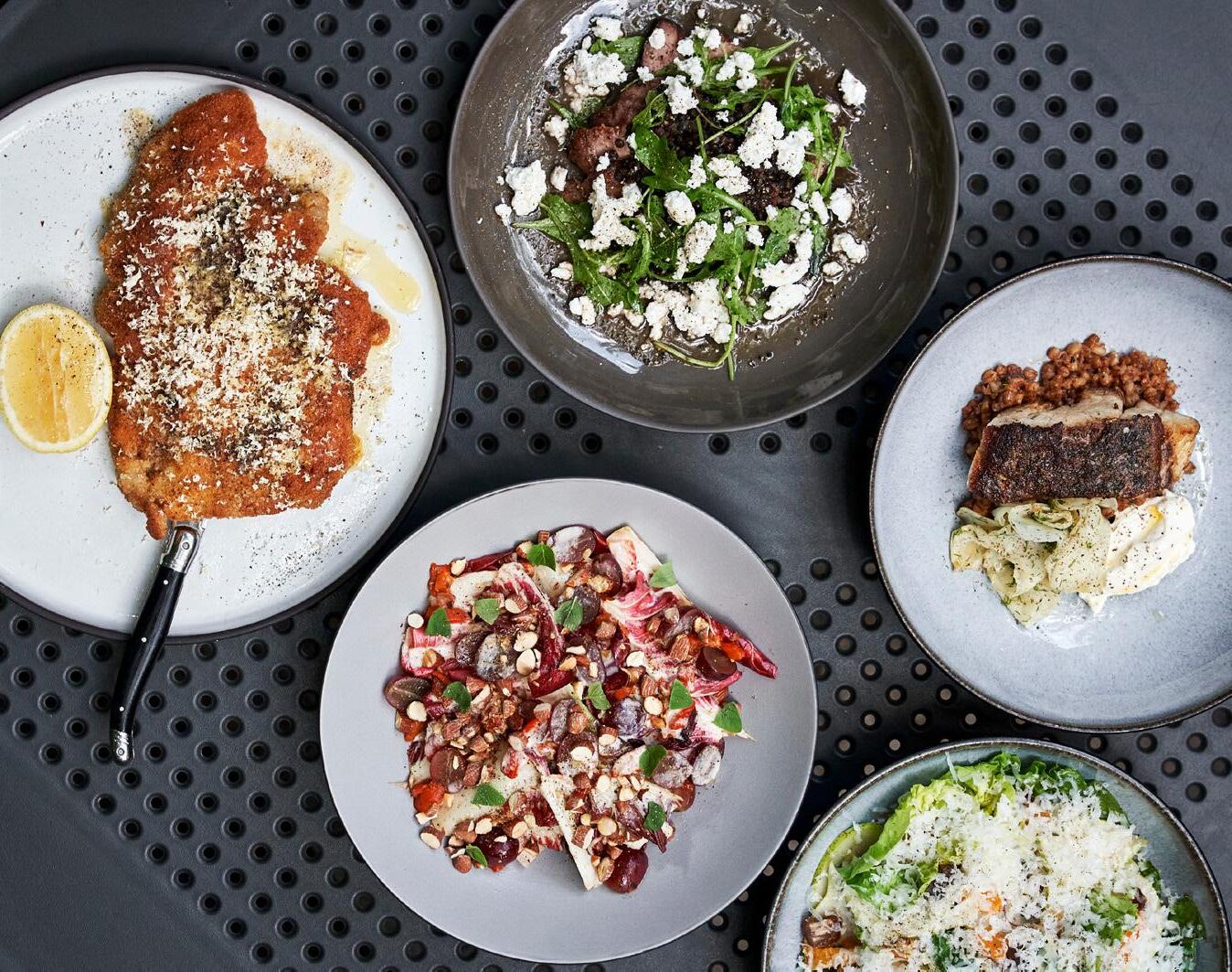
ëlgr Restaurant Food
There have been many great advancements and innovations in the last few years like Coravin, for example. Fine wine does benefit from time spent in bottle and if there was an innovation that could replicate this then I think the world would slowly accept other options for fine wine storage and service. The only option currently that I think works in some circumstances is wine in a keg, for wine meant to be drunk young (e.g. Beaujolais Nouveau or similar) as service wise for a glass of wine it works.
ASI: Are you seeing trends in South Africa as a reaction to climate change, climate chaos?
LRV: Heat is a very, very big thing. We’ve been trying to experiment with a lot of new varieties and trying to reestablish some old varietals that used to be planted in the country. We are seeing a
lot more Italian grape varieties, a lot of southern Rhône varieties surfacing in the country. I know even big producers like Eben Sadie have started experimenting with Counoise, a southern Rhône varietal that's more adapted to the heat that works in the Swartland. We’re also trying to resurface Pontac, a variety that is very unknown to a lot of people, but used to be quite famous in South Africa back in the fifties, sixties. These are mostly to combat the heat, but we are also experimenting with new areas of wine production. You're finding more and more Syrah, for example, coming from cooler climates such as the Hemel-en-Aarde, that used to only be famous for Pinot Noir and Chardonnay, and still is today. Producers there are trying a lot of varieties that wouldn't normally be used in those areas, and it's proving quite successful.
15 Fine Dining Reimagined: A Sustainable Approach FEATURE ARTICLE APRIL 2024 ASI MAGAZINE
Green Gastronomy Globetrotting: How three restaurants are redefining sustainability


Looking Up, Way Up to a Leader of Sustainability: Mil Centro, Peru
Mil Centro is not your typical restaurant. The Peruvian gastronomic destination is located 3,400 metres above sea level. In this remote location, the restaurant, according to Beverage Director, Diego Vasquez “is focused on our immediate environment, and we are in constant dialogue with the neighbouring communities. Much of the work is done hand in hand with the people of these remote communities, who have shown us this place and their traditions and ancestral knowledge. The temporality of the plants and their different uses are thoughtfully considered.”
The extreme location, in combination with their dedication to hyper local ingredients, means their beverage programme is focused less on wine than other top gastronomic destinations. The beverage programme is based on research conducted on the herbs of their garden centre. At Mil Centro they use they local plants for fermentation and distillation experiments based
 We went around the globe to discover three restaurants that are redefining sustainability in their kitchens and on their dining room floor.
Mil Salón (Photo: Gustavo VIvanco)
We went around the globe to discover three restaurants that are redefining sustainability in their kitchens and on their dining room floor.
Mil Salón (Photo: Gustavo VIvanco)
16 FEATURE ARTICLE Green Gastronomy Globetrotting: How three restaurants are redefining sustainability ASI MAGAZINE APRIL 2024
Mil Centro (Photo: Gustavo VIvanco)
on the information of the Mater Liquidos team and in co-creation and with the knowledge shared by the local people. Vásquez explains “for example, the Chicha de Jora (corn beer) that we serve at Mil, we prepare based on what we have learned right there, in a place of extreme altitude and low oxygen.”
As for its wine selection, according to Vásquez “we only have two wines. One of them is produced in Curahuasi, Apurímac, in a vineyard that follows the weather cycles. The vineyards are located at 3 000 metres above sea level, where they are nourished only by available rainwater.” While their extreme commitment could be seen as limiting, Vásquez says “we think our Mil Centro beverage project is a very challenging one, but also a very rich one, that comes with the opportunity of learning and understanding.”
A Zero Waste Philosophy: Silo Restaurant, London, England
Silo Restaurant stands as a pioneer in the United Kingdom’s growing sustainable restaurant movement with its innovative zero waste philosophy. At the core of its bar programme, Silo transforms what would commonly be considered waste into novel and enticing ingredients. Apple pulp from juicing, pumpkin skins, and coffee grounds find new life in creative concoctions, ranging from fermented beverages to unique shrubs and syrups. This approach not only minimises waste but also introduces unusual, flavourful dimensions to their drinks, challenging conventional beverage preparation.
When curating their wine list, according to the team at Silo, “We definitely look for biodynamic, organic certifications when choosing our wines, as a way of ensuring the winemaker’s commitment to sustainability.” However, understanding the financial
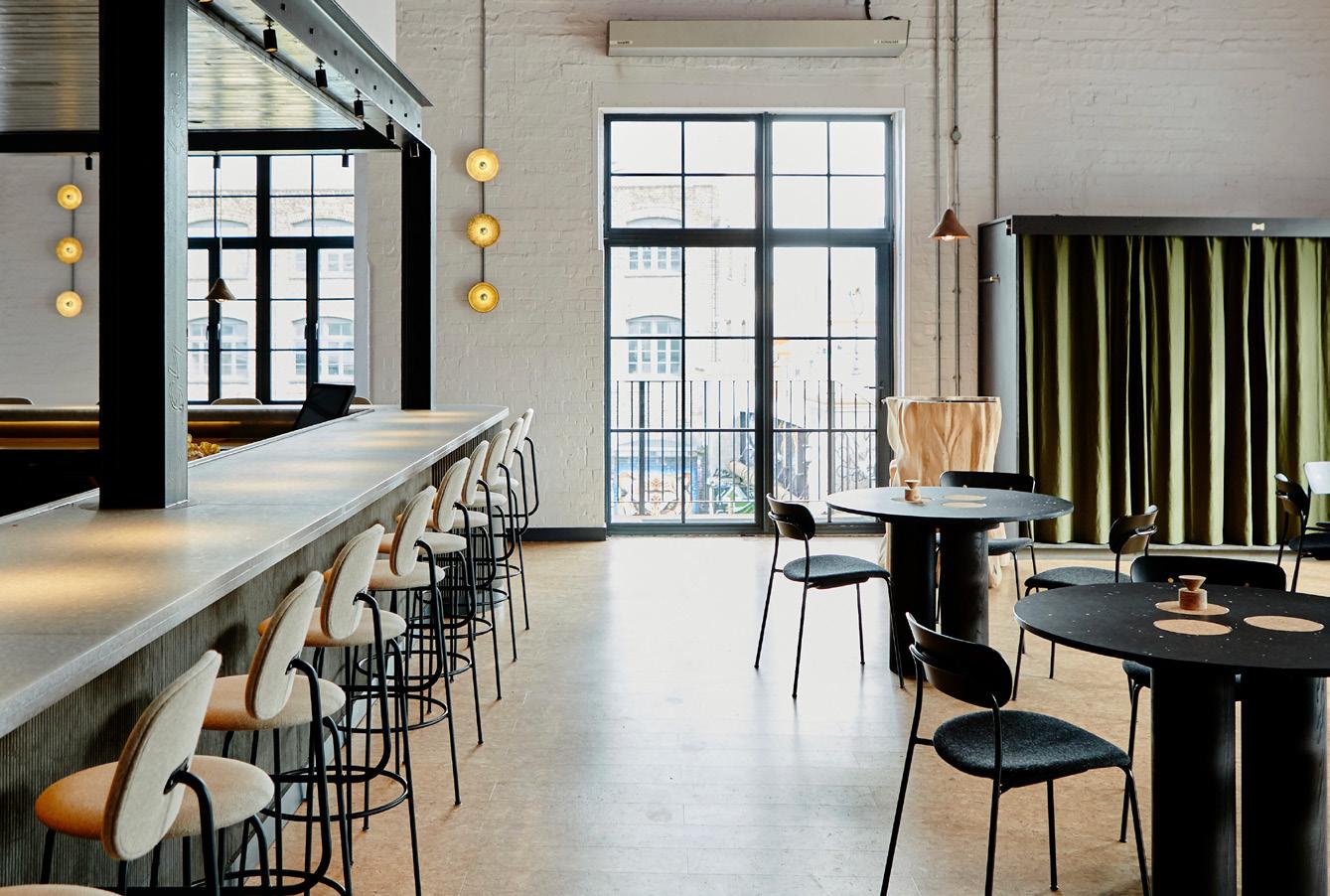

constraints some producers face in obtaining these certifications, Silo extends its list to also support those who, regardless of official accreditation, demonstrate a profound respect and care for their land and the environment through their winemaking practices.
Packaging minimisation plays a crucial role in Silo's zero waste strategy, with the restaurant actively collaborating with suppliers to innovate sustainable packaging solutions. Through upcycling, they do things like turning wine bottles into 'glass ceramics' which adorn the walls and tables of their restaurant. The team elaborate, “we are currently in the process of turning wine corks and champagne cages into new functional items.” In addition to upcycling, they believe in alternative packaging. Several of their drink options, that they don’t produce in-house, come in kegs, reducing lots of packaging waste.”

 Silo
James Pritchard
Silo
James Pritchard
17 Green Gastronomy Globetrotting: How three restaurants are redefining sustainability FEATURE ARTICLE APRIL 2024 ASI MAGAZINE
Douglas McMaster
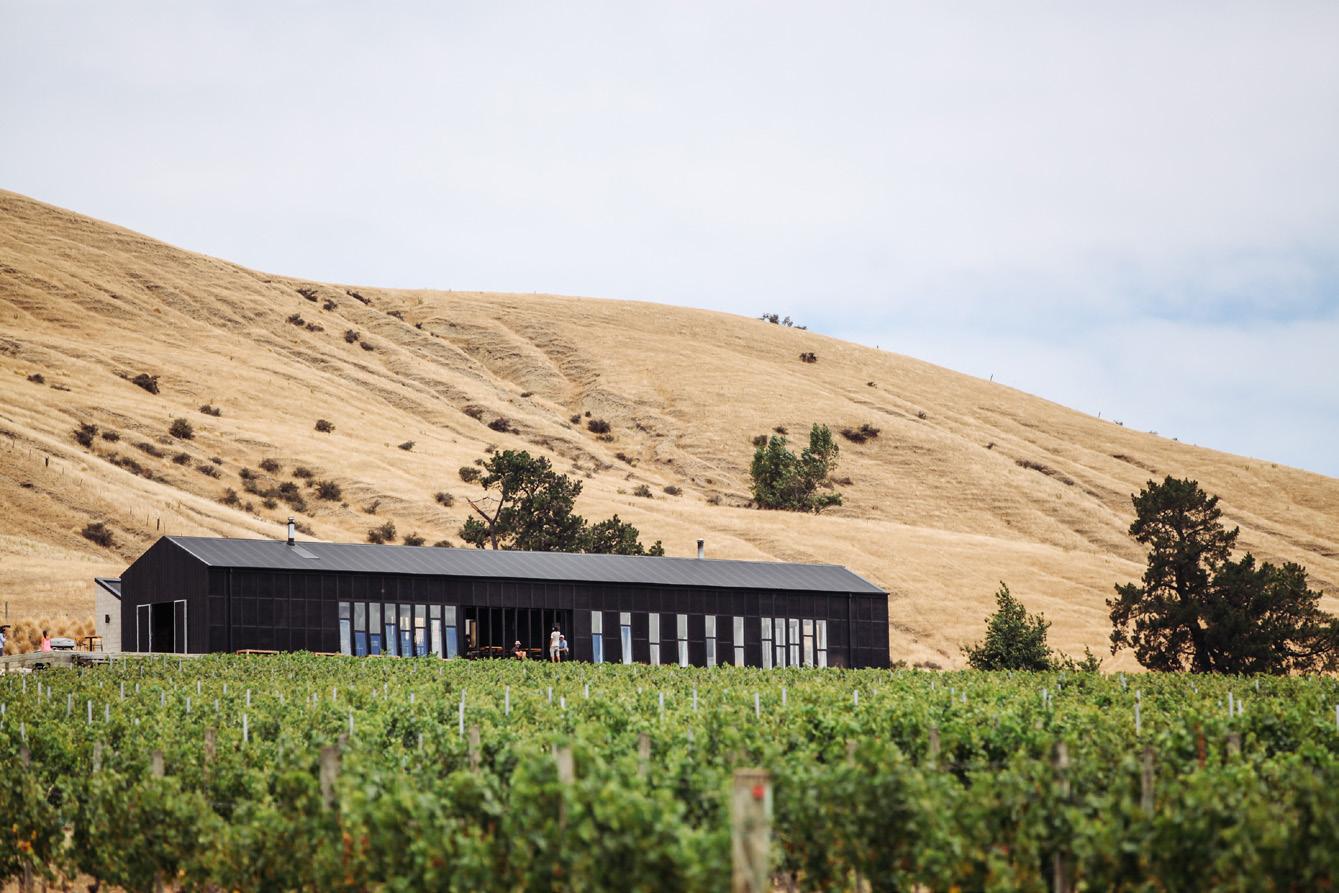
Silo’s commitment to sustainability extends to the careful selection of ingredients with a mindful eye on their carbon footprint. Prioritising locally sourced produce and European wines minimises transportation emissions, while select imported ingredients are delivered via emission-free sail cargo, ensuring an environmentally conscious yet diverse menu. They even choose to project their menus onto a wall and provide QR codes for their drinks list rather than use paper menus.
Through all these practices, Silo Restaurant not only sets a benchmark for sustainability in the culinary industry but also showcases how environmental responsibility can coexist with culinary excellence.
“The restaurant complements the vineyard’s ethos with its environmental synergy and minimalist style.”
Sustainability
Beyond the Plate: Black Estate, New Zealand
In the heart of North Canterbury, New Zealand, nestled among rolling vineyards, lies a testament to sustainability and gastronomic excellence,
Black Estate. This family-owned vineyard and restaurant which was acquired by Penelope Naish and husband, winemaker Nicholas Brown along with Penelope's parents from Russell Black in 2007, has become a beacon of organic and biodynamic agriculture. Their journey, transitioning from weekend vineyard warriors while maintaining day jobs (Penelope was a corporate lawyer) to becoming certified organic by BioGro in 2015 and certified Biodynamic by Demeter in 2023, speaks volumes of their commitment to the earth and the quality of their produce.
The inspiration to open a restaurant alongside their burgeoning vineyard was driven by a desire to showcase the exceptional quality of local, organic food that North Canterbury has to offer. "We were amazed at the quality of food growing around us by small organic farms and new friends," Penelope recounts, emphasising the importance of giving valuable context to their wines through local and seasonal food. The restaurant, designed by Penelope's cousin, complements the vineyard's ethos with its environmental synergy and minimalist style.
Central to the restaurant's philosophy is the insistence on local, seasonal, and spray-free food,
Black Estate
18 FEATURE ARTICLE Green Gastronomy Globetrotting: How three restaurants are redefining sustainability ASI MAGAZINE APRIL 2024
mirroring the principles guiding their winemaking. "This approach aligns with the way we grow and make our wines and also connects the diner to the place they are visiting," Penelope explains. The menu is a reflection of the region's bounty, changing often to highlight the freshest ingredients sourced from small, local farmers known personally to the Black Estate team. This not only supports the local economy but also enriches the dining experience with stories of the land and its stewards.
Sustainability extends beyond the plate at Black Estate. The team employs various initiatives to minimise their environmental impact, such as making their own sodas and cocktails from local fruits and vegetables, using bulk refills for soaps and cleaners, and installing a filtered carbonated water tap dispenser to eliminate the need for bottled sparkling water. Their commitment to reducing waste is further demonstrated through practices like recycling bottles and paper, reusing wine cases, and operating a worm farm that produces nutrient-rich juice for the vineyards.
When it comes to packaging their wines, Black Estate is mindful of its carbon footprint and the challenges of recycling glass bottles. "Despite the fact that our bottles are 80% recycled glass, we still can't solve recycling the actual bottle we sell our wine in," Penelope shares, highlighting ongoing efforts to find more sustainable packaging solutions, including the potential use of eco-friendly casks for various labels.
Black Estate's dedication to sustainability, organic farming, and
support for local producers sets it apart as a model for the future of the hospitality industry. Through their innovative practices and commitment to the environment, Penelope, Nicholas, and their team offer a dining and wine-tasting experience that not only tantalises the taste buds but also pays homage to the land that nurtures their vines. Black Estate stands as a testament to what can be achieved when passion for wine, food, and the planet comes together under one roof.

 Black Estate
Black Estate
19 Green Gastronomy Globetrotting: How three restaurants are redefining sustainability FEATURE ARTICLE APRIL 2024 ASI MAGAZINE
Black Estate
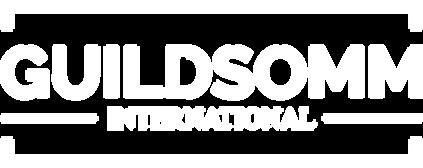
GuildSomm International is a nonprofit membership organization for wine, spirits, and beverage professionals and aficionados. We create and deliver the most accurate, comprehensive, and accessible educational content in support of the global beverage community.






ASI member associations can join GuildSomm with a discount off annual membership.
national association for access to GuildSomm.
Contact your
Vintages of Virtue: Pioneering Sustainability Through Wine in Chile
By Mariana Martinez

Throughout Chile, sommeliers are redefining the connection between wine and sustainability. In this issue, Mariana Martinez talks to four leading sommeliers about their commitment to the environment. Rocío Alvarado of 99 Restaurante champions a philosophy where the origin of wine is as crucial as its taste, curating a wine list that speaks volumes about small wine projects and the heritage of winemaking. Mauricio Fernández, a mixomelier with a flair for sustainable operations, integrates local vineyards and eco-friendly practices at Termas del Corazón. Hugo Córdova, a gastronomy entrepreneur, transforms waste into wealth in Ñuñoa, proving that sustainability can fuel community and innovation. Meanwhile, Magda Saleh Jacobo, with a palate refined across continents, brings organic and biodynamic wines to the forefront at La Jardinera, blending tradition with environmental stewardship. Together, these sommeliers are not just serving wine; they are narrating a story of tradition, sustainability, and deep respect for the terroir.
Rocío Alvarado, 99 Restaurante, Santiago, Chile. Before becoming a professional sommelier at the Escuela de Sommeliers de Chile (ESCL), Rocío studied Art History. After her last year as sommelier at CORA Restó, focusing her wine list on small wine projects, Rocío is now immersed in the reopening of 99; five times awarded among the best restaurants in Latin America (50 Best). Since 2024, reopening at its current location, 99 has been offering a menu based on local products, region by region, with the philosophy that wine is also food and its origin matters. “If we at 99 are concerned about the origin of the ingredients, their seasonality, the seasons of the product, and that they come directly from the producer," explains Rocío, "it is equally important to know how the wine producer connects with the place where their wine is produced: with the soils, the biodiversity that surrounds them, the community. In Chile, many are aware of this or in search of this, and I think it is important to show our clients their work.” She adds, “When the big wine distributors create exclusivity contracts everywhere for their wineries, the sommelier can't be part of that game; he has to offer a sense of surprise. And I myself must go to the territories and witness how the work of the winemaker is, especially since we don't have certifications in Chile for natural wines. I also applaud the producers who, despite the difficulties, insist on maintaining what their parents and grandparents used to do; that
21 Vintages of Virtue: Pioneering Sustainability Through Wine in Chile FEATURE ARTICLE APRIL 2024 ASI MAGAZINE

knowledge, like their wines, is our heritage." The sommelier, she concludes, “beyond offering the correct service of wine to the table and presenting the perfect glass for the perfect wine, must also be a translator of tradition.”
“Beyond offering the correct service of wine to the table and presenting the perfect glass for the perfect wine, must also be a translator of tradition.”
– Rocío Alvarado
Mauricio Fernández, known as a mixomelier and pioneer in the new wave of the Tiki cocktail movement in Chile, is a gastronomic consultant, IBA bartender, hotelier, and professional sommelier certified by the Court of Master Sommeliers. He is currently the food and beverage manager of the hotel, spa, and convention centre, Termas del Corazón. Located in the Andes Mountains, 87 kilometres north of Santiago, the location has earned the S Seal for their commitment to sustainability. To accomplish this, they generate electricity via solar panels, use lowenergy heat pumps, low-pollution boilers, waste recycling, water treatment, and work with local suppliers, including fishermen with blue certification (Certified Sustainable Seafood MSC). "Thanks to the use of solar panels, we reduce electricity consumption by 40 per cent, among other benefits, while the heat pumps help us to use cleaner energy by reducing firewood consumption by 50 per cent and lowering CO2 emissions by 53 per cent," Mauricio explains. Regarding the wine list, they only work with local vineyards from the Aconcagua Valley, including vineyards from the high mountain range, at 1 600 metres above sea level, to the coast. Some are larger and better-known wineries, such as Errázuriz with vineyards from Panquehue (in the Entre Cordilleras area) and up to the coast, in Chilhué; or smaller ones, such as Insitu (formerly Viña San Esteban) in

the foothills of the Andes. They also work with very small-scale projects such as Viña El Escorial and La Joda.
Hugo Córdova, a gastronomy entrepreneur, studied to become a professional sommelier to understand the world of wine from an insider’s perspective. Currently, among other responsibilities, he oversees the wine lists of La Vinocracia, La Destilería, and Fuente Riquelme. He also manages projects related to the training of wine professionals, co-financed by the State of Chile. This role led him to become president of the Chamber of Commerce, Tourism, and Entrepreneurs of Ñuñoa, the neighbourhood that is home to his enterprises. In this role, he has already managed to unite 25 restaurants around Plaza Ñuñoa, committing them to clean production. This involves recycling paper, cardboard, soft and hard plastics, Tetra Paks, cans, and glass. Also, the recycling of 100 per cent of their organic waste, which they return to the community as compost. Step two of the plan, he explains, "is to import a new machine from Sweden by 2025 that will convert organic waste into energy, thus feeding electricity back into the system." They are also exploring, through agreements, how to extract raw materials from
Rocío Alvarado
Mauricio Fernández
Vintages of Virtue: Pioneering Sustainability Through Wine in Chile 22 FEATURE ARTICLE ASI MAGAZINE APRIL 2024

“Look for small producers, always with the same focus, without neglecting wines from better-known vineyards or those without certifications, such as Casa Silva Gran Terroir de los Andes Carmenere.”
– Magda Saleh Jacobo

their more complex waste, such as peels from lemons, avocados, tomatoes, and onions that end up as rubbish. "We aim to rescue polymers to be used in food and cosmetology to help finance the project." His philosophy seeks to protect the environment, as well as to promote responsible consumption and, above all, foster community.
Magda Saleh Jacobo discovered the world of food and drink in the United Kingdom. She worked at The Westbury in London in 2003, where she tasted wines from all over the world. This experience led her to return and study to become a sommelier at ESCL; at the same time, she served as an ambassador for Viña Veramonte
in the USA. After three years as the first sommelier at the Ritz Carlton Santiago, she returned to London, this time to work at the Michelinstarred restaurant La Trompette, as an assistant to Master Sommelier Matthieu Longueire. In 2013, she returned to Puerto Varas, in the south of Chile, where she founded La Jardinera restaurant with her husband. After moving to a new home, now in the midst of the countryside, her wine list focuses on certified organic and, ideally, biodynamic wines. Among them, she highlights the wines of Viña Emiliana and Antiyal's Pura Fe line (the first biodynamic project in Chile).
"I also try," she explains, "to look for small producers, always with the same focus, without neglecting wines from better-known vineyards or those without certifications, such as Casa Silva Gran Terroir de los Andes Carmenere, which represents this variety exceptionally well." To her wine list, she adds local wines from the so-called Southern Region, which rotate according to the season. In the summer, she serves Viña Kütralcura, a blend of Viognier, Chardonnay, and Pinot Noir. From the nearby Osorno Valley, she offers a Pinot Noir from Fuy Wines; and from Río Bueno, Coteaux Trumao. Her beverage list consistently includes an Argentine wine and an apple cider, the latter being a very typical product of southern Chile.
Magda Saleh Jacobo
Hugo Córdova
23 Vintages of Virtue: Pioneering Sustainability Through Wine in Chile FEATURE ARTICLE APRIL 2024 ASI MAGAZINE
Uncorking Sustainability: Wine, Corks, and the Future
With João Rui Ferreira
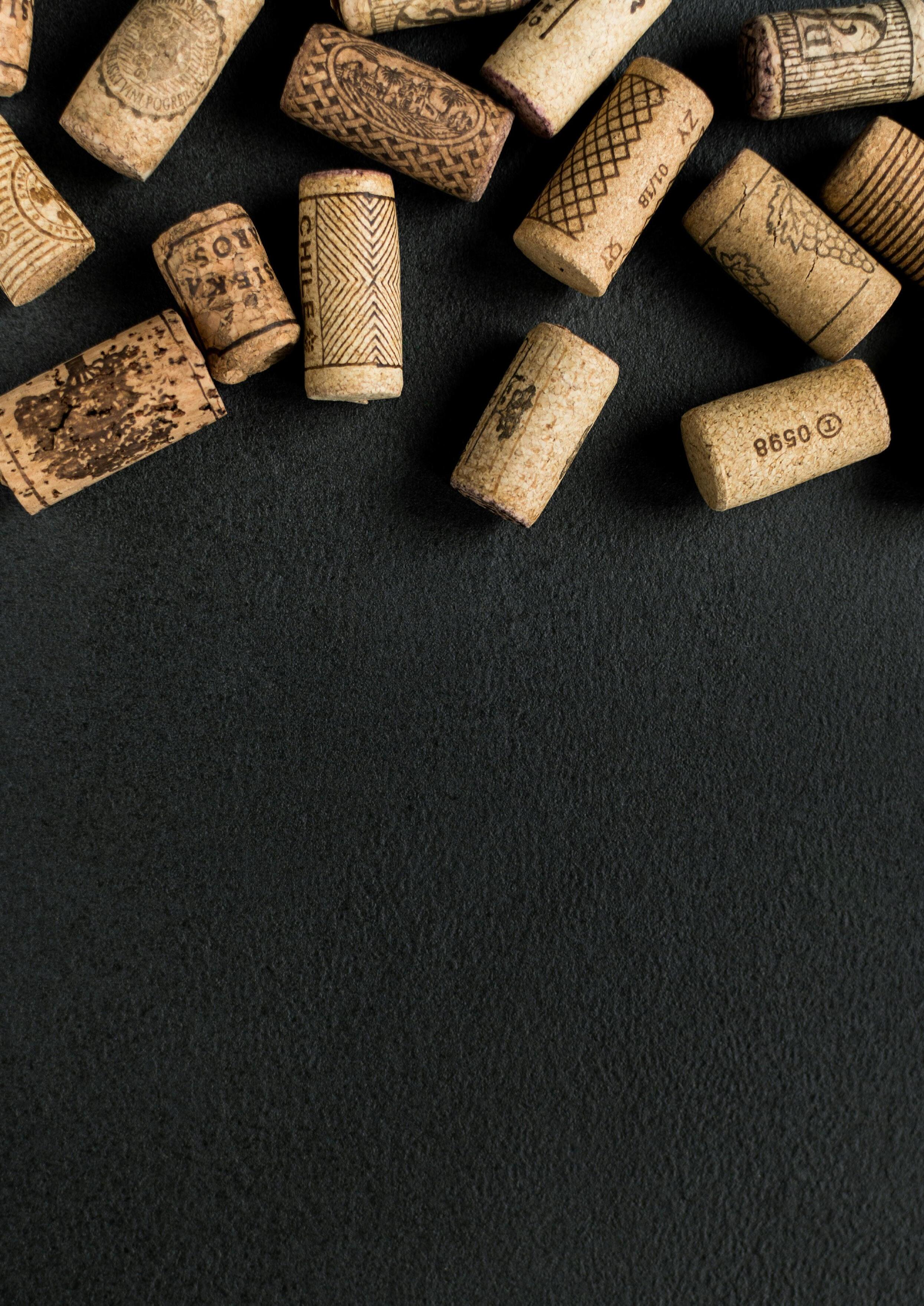
In the quest to unveil the ecoconscious facets of the wine industry, our journey leads us to João Rui Ferreira, the charismatic Secretary General of APCOR, the Portuguese Cork Association. Portugal, celebrated for its rich viticultural heritage, also stands at the forefront of sustainable practices, notably through its stewardship of cork forests. Ferreira, and the association, play a pivotal role in advocating for cork as a natural, renewable, recyclable choice, directly impacting the wine industry's sustainability.
Our conversation with Ferreira sheds light on how this traditional material harmonises with modern ecological imperatives, further enriching the narrative of wine production with a green thread.
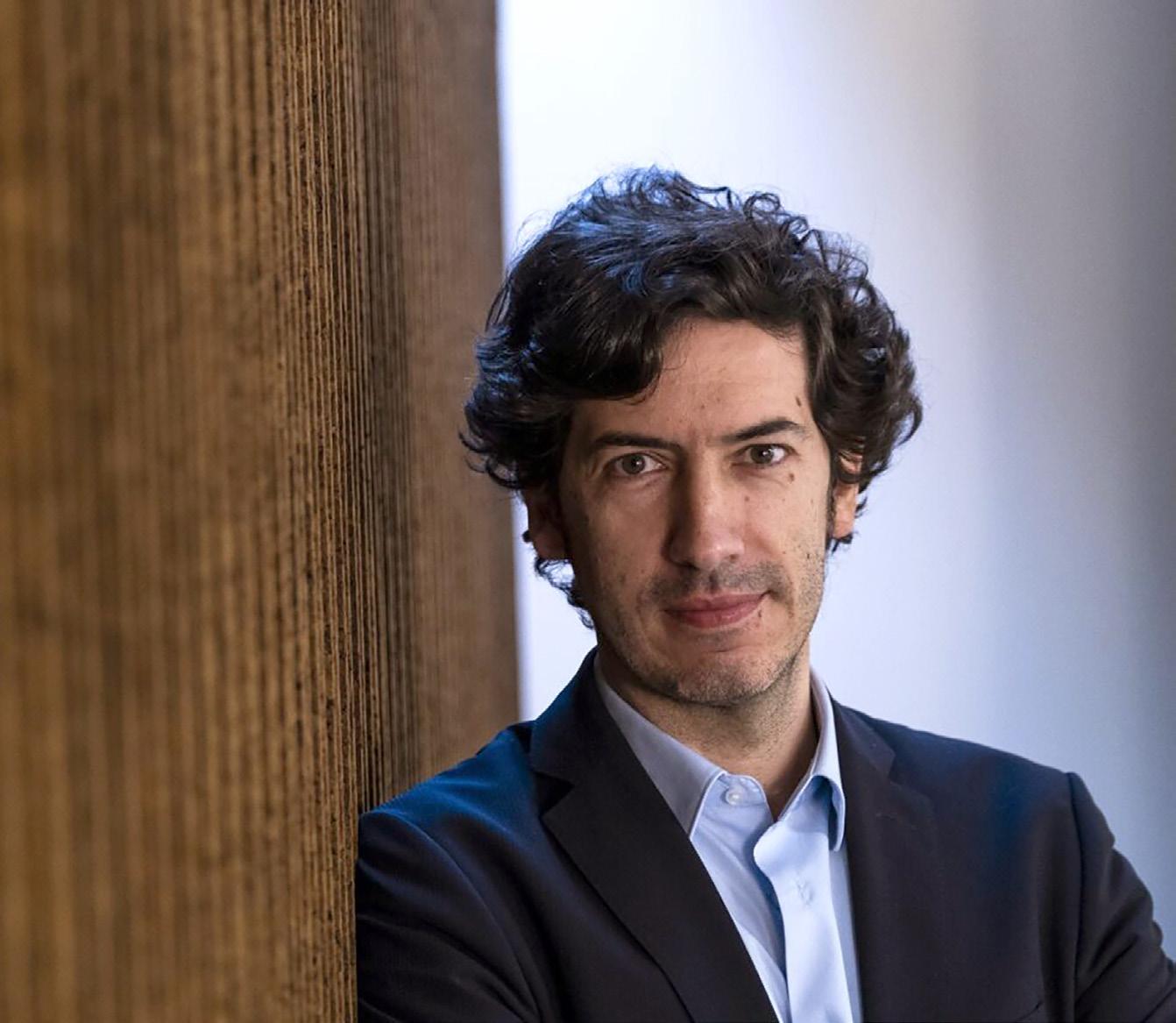
24 FEATURE ARTICLE Uncorking Sustainability: Wine, Corks, and the Future ASI MAGAZINE APRIL 2024
João Rui Ferreira

ASI: Can you explain why cork is a sustainable product?
João Rui Ferreira (JRF): At the end of the day, I link it back to the circular economy, that is the new economic model everyone is trying to achieve. Cork is a good example of this. In terms of environmental sustainability cork trees are never cut down. It’s a species that is naturally renewable. As the tree regenerates its cork bark every nine years.
“In terms of environmental sustainability cork trees are never cut down. It’s a species that is naturally renewable.”
The raw material also comes from a wonderful ecosystem, which are the cork forests. In Portugal we call them ‘montado’, which is a word without a direct translation. It’s a forest where people and nature live together in a very perfect way. Nothing is destroyed. We can profit from every single aspect of this ecosystem; from the products it produces. Cork being the top of the pyramid, but then you can have a lot of other activities, from farming to tourism, to cultural aspects in this ecosystem.
The forest is also a carbon sink. If we consider all our production including supply chain, we are not emitting CO2, but retaining CO2. Secondly, since the trees are never cut, the soil is protected, which also supports water conservation, because many of these forests act as aquifers, producing and protecting a lot of water. This is a very important issue because you have many urban centers near these forests, that benefit from this.
Thirdly, and no less relevant, since we are talking about protecting biodiversity, is also preserving humanity. Protecting biodiversity is the key to saving our planet, but the big question is not saving the planet. The planet will live by itself. We are saving humankind and ourselves. Protecting biodiversity, should also be seen as the combination of preserving this equilibrium between man and nature.
Furthermore, cork forests protect Southern Europe from the effects of desertification, because of blowing sand from North Africa. We need to do much more in the fight against climate change, but preventing the desertification of these areas is very important and is only possible by planting more cork trees.
Montado
25 FEATURE ARTICLE Uncorking Sustainability: Wine, Corks, and the Future APRIL 2024 ASI MAGAZINE
Moving to the social aspect, we are talking about a sector that is also vital to the economy of the western Mediterranean basin, particularly Portugal. The extraction of cork is one of the best paying agricultural jobs in the world. People harvesting cork, which is a year-round activity, earn a wage of between 180 to 200 Euros per day. It’s very positive not only for them, but also because it keeps people living and working in rural communities.
In Portugal, it’s a very relevant, economic sector. Today we export more than 1.2 billion Euros worth of cork worldwide. In terms of sustainability, it goes beyond the environment, as our industry is not only positive for our planet, but also for our population. If you think about it, these trees have existed in this part of the world for more than 10 million years. What we are doing now is trying to use forests in the most sustainable way possible, by getting economical value from it to support people.
ASI: We’ve identified cork as being a sustainable product but what else can the industry do?
JRF: We want to go even further and develop our circular economy. One of the main keys of cork production is the use of everything we extract from the trees. We use everything we harvest from the forest. For example, when producing cork stoppers for wine, there are by products which can be granulated to be used to produce flooring, construction materials, sport fields, even fashion items like purses and shoes. All of this is possible because we have a very efficient cycle of production where we don’t waste anything. Cork is really an example

of zero waste. Of course, this is a work in progress. You can always do more. We are also working together with our technology center in a decarbonisation programme to use processes and technologies that can be cleaner and more efficient. We are also investigating using more renewable energy sources. Thankfully Portugal is sunny so we can improve things by using more solar power.
ASI: What are you doing to support recycling efforts?
JRF: The question is not how to recycle. Corks are 100 per cent recyclable. The big question is how to collect and reuse products that we export from Portugal to all over the world. We export to more than 100 countries. We are working in different areas around the world on ways to collect cork, via establishing partnerships with some retailers, local associations, and some big companies. We have worked with large retailers in the UK and France, and an excellent example in North America is Recork, a company that collects corks from retailers and restaurants and uses them to make
“I think sommeliers are very powerful, at least for people like me, because, when they provide advice, they are telling a story to you, as the last person that will be part of that experience.”
26 FEATURE ARTICLE Uncorking Sustainability: Wine, Corks, and the Future ASI MAGAZINE APRIL 2024
shoes. Unfortunately, legislation for recycling is not the same everywhere so for some places we need to find ways to transport collected corks or other materials to Portugal where they can be recycled. It’s a big challenge but we are working on it.
ASI: If we look back 20 years, 30 years ago, a time when there was a significant movement towards Stelvin caps and cork alternatives, some of this was TCA (2-4-6-trichloroanisole) related. Where are we at with respect to TCA in cork?
JRF: To give you some context, Portuguese cork exports over the last decade has grown at about 4 per cent per year. Clearly, we are getting market share back again from screw caps. The numbers show that seven out of ten bottles in the world today use a natural cork stopper. The cork sector was able to improve the performance and the quality of the product. Over the last 20 years we have invested more than a half billion euros to deal with this. In the beginning we tried to use prevention methods, so that the TCA didn’t develop. In the last few years, we have developed technology to identify TCA in a very fast way. Today we have the TCA issue controlled, and largely eliminated.
ASI: We spoke of culture and history. Do you think this applies to the ritual of a sommelier opening a wine housed in a bottle with a cork stopper?
JRF: Wine is much more than something that you drink because you are thirsty. It’s something that you drink to have pleasure. It’s an experience that speaks to culture and history. When you talk about it, you want to know where the wine comes from, how the wine is produced, which grape was used to make it, how it is packaged. In this way cork is really part of this global story. Cork and wine have
been living together for centuries. It’s probably the longest economic marriage ever, complete with all the ups and downs, difficulties and celebrations marriages bring.
There is something special about the wine opening experience, of having that last moment before a wine is tasted, hearing the pop of the cork. All these components contribute to why consumers prefer to drink wine from a bottle with a cork. This is why sommeliers are so special for us in terms of communication. I think sommeliers are very powerful, at least for people like me, because, when they provide advice, they are telling a story to you, as the last person that will be part of that experience.
ASI: Speaking about the marriage of cork and wine. It’s really a threesome because it’s cork, wine, and bottle. How collaboratively are you working with the glass industry? JRF: Much more than in the past. Previously, we (the cork producers) were probably more aware of the need to work together than the glass industry was for several reasons. We are talking about two completely different sectors, but it’s clear today for everyone that a glass bottle with a cork stopper is better than a glass bottle with anything else. I’m sure they, the glass industry, are also aware of that. We are working more and more together, to have the best seal possible in the bottle. That is the big advantage of cork as it adapts to the bottleneck like no other product. Today we are looking to find ways also to communicate and to show consumers, and professionals, that the combination of these two products (bottles and corks), is better than other options.

27 FEATURE ARTICLE Uncorking Sustainability: Wine, Corks, and the Future APRIL 2024 ASI MAGAZINE

Cracks in the Bottle? Building a Case for Alternative Packaging
Are we on the verge of a packaging evolution in the wine industry? In the storied world of wine, the ritual of a sommelier uncorking a bottle and the anticipation of the first drops of wine poured from bottle to glass are moments cherished by enthusiasts around the globe. This tradition, steeped in history and romance, has long been a significant part of wine's allure. Yet, as the drumbeats of environmental consciousness grow louder, the wine industry stands at a crossroads, faced with the urgent question of whether it's time to evolve its packaging practices to be more environmentally friendly. This pressing need for change must be carefully balanced against the deep-seated romanticism of opening a bottle of wine, the proven aging benefits of certain wines in bottles sealed with corks, and the acceptance of new technologies such as KeyKegs, wine in cans, wine in bag-inbox, and wine in Frugalpac.
The wine industry, revered for its dedication to tradition and quality, is now being challenged to reassess its practices considering growing environmental concerns. The carbon footprint of glass bottle both in production and transportation, coupled with issues around the recycling and reuse of glass bottles, has sparked a debate on the sustainability of current packaging methods.
There is a certain irony that a product associated with nature and the environment is often housed in a container that is unnecessarily heavy and damaging to the environment. This irony isn’t lost on many critics. Jancis Robinson says, 'because the production and transport of glass bottles represents up to 60% of wine’s carbon footprint, it’s vital for the sake of the planet that we dispel the myth that there is any relationship between bottle weight and wine quality. Light bottles are virtuous; heavy bottles definitely aren’t.”
Cracks in the Bottle? Building a Case for Alternative Packaging 28 FEATURE ARTICLE ASI MAGAZINE APRIL 2024

“Because the production and transport of glass bottles represents up to 60% of wine’s carbon footprint, it’s vital for the sake of the planet that we dispel the myth that there is any relationship between bottle weight and wine quality.“
– Jancis Robinson
While some wrestle with weight of glass, others are thinking outside the box, or ‘in the box’ as the case may be. The advent of alternative packaging options, such as lightweight aluminum cans, recyclable KeyKegs, flexible bagin-box systems, and innovative Frugalpac bottles made from recycled paperboard, presents an opportunity to significantly reduce this footprint. These alternatives offer not only environmental benefits but also convenience and cost savings in transportation and storage.
However, transitioning to new packaging solutions is not without its complexities. The romance and tradition of wine culture, epitomised by the act of uncorking a bottle, hold a sacred place in the hearts of many wine lovers. Furthermore, the aging potential of wines, particularly those that benefit from the microoxygenation allowed by cork, could be compromised by switching to alternative closures. This raises questions about the potential impact on the quality and character of wines aged in non-traditional packaging.
Despite these challenges, the wine industry's foray into innovative packaging solutions has been met with varying degrees of acceptance.
Wine in cans has seen a surge in popularity, particularly among younger consumers who value convenience and sustainability. Similarly, the bag-in-box format, long associated with lower-quality wines, is being reconsidered for its environmental benefits and ability to preserve wine freshness for extended periods. Meanwhile, the use of KeyKegs for on-premises wine service and Frugalpac's recyclable bottles for retail distribution are examples of how the industry is experimenting with new technologies to address environmental concerns.
As the wine industry contemplates this potential evolution, the question remains: Can it find a harmonious balance between maintaining the romance and integrity of wine culture and embracing more sustainable practices? The acceptance of new packaging technologies will likely depend on their ability to preserve the quality and character of the wine, while also offering clear environmental advantages. In navigating this transition, the industry must engage in open dialogue with consumers, vintners, sommeliers and environmental experts to explore the viability and acceptance of these innovations.
29 Cracks in the Bottle? Building a Case for Alternative Packaging FEATURE ARTICLE APRIL 2024 ASI MAGAZINE
The journey towards more sustainable wine packaging is emblematic of the broader challenges facing industries worldwide as they seek to reconcile tradition with progress. As we move forward, the wine industry's response to these challenges will not only reflect its commitment to environmental stewardship but also its ability to adapt and innovate while preserving the essence of what makes wine so universally beloved.
Canned Cab?
The wine industry, mirroring the spirits sector, is witnessing a surge in ready-to-drink (RTD) beverages and canned wines, with predictions suggesting the global canned wine market will approach $600 million by 2028, expanding at an annual rate of 13.2% (Grand View Research). This growth is fueled by changing consumer preferences, especially among younger drinkers who favour the convenience, affordability, diversity, and casual nature of RTD and canned wines. These alternatives are also appealing to health-conscious consumers, many brands offering low-calorie and low-sugar options, while aluminum packaging enhances shelf life by protecting against UV light and oxygen, offering retailers a solution to stock shortages and supply chain issues. Add in environmental considerations, such as ease of recycling (75 per cent of all aluminum ever produced is still in use thanks to the materials high level of recyclability and higher frequence of recycling versus glass). The reuse of aluminum also saves 95 per cent of the energy required to produce aluminum from raw materials. This combined with the reduced carbon footprint of shipping cans due to their lighter weight nature.
However, the transition to canned wines is not without its challenges. Extracting the materials to make cans is energy intensive, and
bauxite mining can result in habitat loss. Additionally, there can be some challenges maintaining wine quality—managing oxygen exposure during the canning process, preventing chemical interactions between the wine and the can's lining, and addressing temperature sensitivity—to overcoming consumer perceptions of quality and tradition, the canned wine industry still faces several hurdles.
As the canned wine segment continues to grow, driven by consumer demand, particularly amongst Millennials and Gen Z, for convenience and sustainability, will sommeliers and the broader wine industry find a balance between innovation and tradition? Can cans become part of our dining experience? Do we have a choice not to let it be part of the narrative of wine service in the future?
Are Kegs the Key?
KeyKegs have emerged as a modern solution in beverage packaging, championing sustainability, quality preservation, and logistical efficiency. Keykegs offer a double wall container, with a non-porous inner bag, with a grip ring and a basecup made from 100 per cent recycled polypropylene. Furthermore, a KeyKeg, in total, is made from 86 per cent recyclable material. Lightweight and disposable, KeyKegs greatly reduce transportation emissions and costs. A 20 litre KeyKeg holds the equivalent of 30 bottles of wine.
Beyond sustainability, KeyKegs are also designed for ease of use as they can be connected to any dispensing system, working both with compressed air, CO2 and nitrogen systems, only requiring an easy to purchase KeyKeg coupler.

“BiB packaging represents a significant opportunity for innovation, provided it can align environmental benefits with consumer expectations for fine wine service.“
Cracks in the Bottle? Building a Case for Alternative Packaging 30 FEATURE ARTICLE ASI MAGAZINE APRIL 2024

From a quality preservation perspective their unique bag-inkeg system safeguards against oxidation and light exposure which according to French Account Manager Mariska Musch, means “the quality of the wine stays for a long time.”
While intended for reuse, Musch says “there are some clients that ask what do to with the empty kegs? It's, important (if not using a recycling partner) to deflate the KeyKeg because it has two bar compression, and then flatten it. It's possible to put those parts in the recycle bin for recycling.”
While the parts are ‘recyclable’ this is not the longer-term goal of KeyKegs. KeyKegs are intended for reuse, relying on regional recycling facilities, and requiring refilling machines which could challenge the notion of their broader sustainability, at least until broad acceptance leads to market saturation in various countries and regions around the world. Currently the technology is gaining wider acceptance in Western Europe. KeyKegs have worked strategic
partnerships in Western Europe, including one with Elisa in France, giving them access to forty recycling facilities across the country. According to Musch prospective and current clients can find information about part “on our website, with our collection partners who collect the kegs for recycling.”
An Inside the Box Solution
The bag-in-box (BiB) packaging format has been gaining traction in the wine industry, presenting both environmental benefits and challenges, while also influencing consumer acceptance. This format, which consists of a plastic bladder protected by a cardboard box, offers several notable advantages from an environmental perspective.
The primary advantage of BiB packaging is its comparably lighter weight compared to glass bottles. The result is reduce emissions during transport due to its more efficient use of space and overall lower weight. This efficiency can significantly diminish the carbon footprint associated with the logistics of wine distribution.
Additionally, the materials used for BiB packaging - mainly cardboard and plastic - are generally more energy-efficient to produce than glass, and the cardboard portion is easily recyclable in most areas.
Yet, despite these environmental advantages, consumer acceptance of BiB for fine wine remains mixed, at best. Historically, BiB packaging has been associated with lowerquality wines, which poses a challenge for vintners looking to market premium products in this format. The perception of quality and tradition plays a significant role in the wine purchasing decision, especially among connoisseurs and enthusiasts of fine wine. These consumers often value the ritual of uncorking a bottle and may view BiB packaging as less prestigious or appropriate for high-quality wines.
As the wine industry continues to evolve with a growing emphasis on sustainability, BiB packaging represents a significant opportunity for innovation, provided it can align environmental benefits with consumer expectations for fine wine service.
31 Cracks in the Bottle? Building a Case for Alternative Packaging FEATURE ARTICLE APRIL 2024 ASI MAGAZINE

Sabering Champagne’s Heavy Glass Ceiling
In a step towards environmental sustainability, Verallia, one of the world’s largest glass bottle producers, has significantly reduced the weight of their champagne bottles. Marie-Astrid Gossé, Marketing Director at Verallia Group, shared insights into this groundbreaking achievement.
"We've managed to estimate, through internal tools, that our lightweight bottles substantially reduce our carbon footprint," Gossé explains. This milestone was reached not without its challenges, particularly in crafting a lighter yet equally sturdy bottle.
The development process involved meticulous testing to ensure the bottles-maintained resistance against champagne's high level of carbonation despite the 35 gram reduction in bottle weight. "This required a comprehensive glass drawing to ensure optimal distribution and numerous resistance tests," Gossé details. This extensive effort culminated in successful real-life validations, reinforcing Verallia's commitment to innovation.
Beyond lighter bottles, Verallia also worked with Champagne Telmont on a project dubbed "193,000 shades of green". Glassmakers change the tint of glass in a furnace. In the process a certain percentage of bottles do not achieve the colour, chromatic standard. Telmont is using this ‘waste glass’ in its effort to be sustainable but also market the individuality of its wine, terroir, and the uniqueness of each bottle.
Verallia's claims a robust environmental strategy, targeting increased glass recycling, enhanced energy efficiency, and reduced transportation emissions. "Our goal is to reimagine glass for a sustainable future," Gossé asserts, highlighting efforts to align with a major CO2 emission reduction by 2030. This initiative not only indicates Verallia's desire to be more sustainable and set a new standard in the glass manufacturing industry, paving the way for a greener future.
Cracks in the Bottle? Building a Case for Alternative Packaging 32 FEATURE ARTICLE ASI MAGAZINE APRIL 2024



2024 EDITION OF SCHOOL OF PORT’S DOURO SOMM CAMP IS AROUND THE CORNER
If you’re passionate about port, it’s likely that you’ve heard of School of Port. If you haven’t, then you’re missing out. Since it was launched by Symington Family Estates in 2020, School of Port has been on a mission to educate anyone and everyone who is interested in learning about this unique wine from the Douro Valley in northern Portugal.
Since no-one is more eager to learn about wine than sommeliers, every year School of Port invites the best of the best from all over the world to visit the Douro to learn about all things port through an immersive educational experience.
The third edition of Douro Somm Camp will take place this year from the 1st to 4th of July and, if previous seasons are anything to go by, it will be a week full of diverse and unique experiences that will allow participants to dive deep into the world of port.
Along with masterclasses and tastings, the group of sommeliers will get to see where and how port is made, from the vineyards in the Douro, to the lodges in Gaia, always accompanied by winemakers, viticulturists, and salespeople.
We can assure you that, as always, this year’s edition will have a few surprises, but all the favourites are set to make a comeback, including a special dinner at the historic Factory House in Porto, engaging masterclasses on sustainability, climate change and viticulture, as well as tastings of Aged Tawnies and Vintage Ports.
Roots in Tradition, Growing a More Sustainable Tomorrow
With Pascaline Lepeltier

Pascaline Lepeltier needs little introduction. Amongst other accolades, the “Natural Wine Evangelist” (Food & Wine), earned the title of Best French Sommelier in 2018, and placed fourth at the ASI contest for Best Sommelier of the World 2023. Thanks to a legion of followers on social media she is arguably the world’s bestknown sommelier. Despite her world renown Lepeltier remains remarkably grounded, and soft spoken, even if her words demand attention. Many of those words are dedicated to encouraging producers to make wines using more natural, less intrusive methods.
Her own personal journey with sustainability started immediately after her entry into the world of wine. Following earning a master’s in philosophy, Lepeltier began working at two-star Michelin L’Auberge Bretonne, where within a
“Sustainability embraces and understands all the elements, which includes socio-economic sustainability.”
year she was awarded the title of Best Loire Valley Young Sommelier and Best Brittany Sommelier. Of her commitment to sustainable wines, initially it was focused on her home region, the Loire, and the idea was according to Lepeltier, “was more on the farming side. I wanted to understand why people were growing organically, and biodynamically. I understood there was a clear connection between what they were doing, and the soil, the vines and the quality of their wines.”
When Lepeltier moved to New York City, in 2009, a new understanding of sustainability began to evolve. She credits her time at Rouge Tomate for broadening her concept of sustainability to one “that embraces and understands all the elements, which includes socio-economic sustainability.” As a new purpose-built concept
Pascaline Lepeltier
34 Roots in Tradition, Growing a More Sustainable Tomorrow FEATURE ARTICLE ASI MAGAZINE APRIL 2024
restaurant Lepeltier concedes it was somewhat easier to be holistic in their commitment to sustainability at Rouge Tomate than even her current restaurant Chambers. For Chambers, she says it is more of an evolution.
Pascaline also suggests from a broader viewpoint, sustainability programmes are more easily achieved in some countries, even certain cities, towns, compared to others. In France, for example, she says, “there is a completely different political system, one that has strong social welfare programmes, a richer history of taking care of workers, a strong union environment. On the contrary, the US doesn’t have this.”
Her own path to sustainability took a step forward with her chëpika project. What began as a simple quest to find certified organic white wine from New York, turned into a winemaking project with Nathan Kendall with a purpose that expanded beyond their original vision. In that journey “it became more than an idea of making organic wine but expanded to include an understanding of local biospheres, and why in fact hybrids were so suited for the Finger Lakes.” In fact, the word chëpika translates to ‘root’ in the Lenape language spoken by the Native American tribe of the Delaware. Lepeltier and Kendall focus on
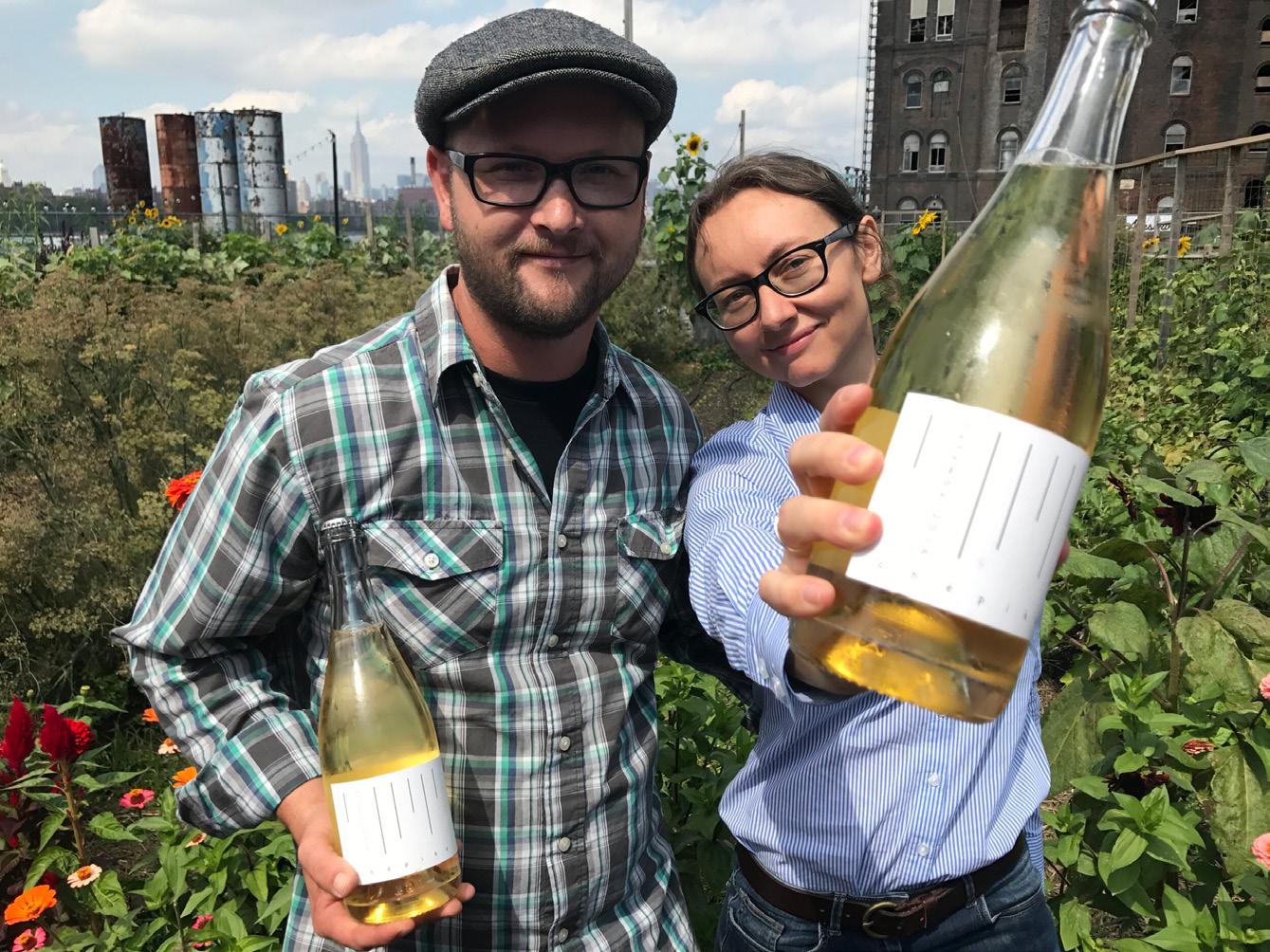
“I understood there was a clear connection between what they were doing, and the soil, the vines and the quality of their wines.”
Catawba and Delaware, hybrids of American Vitis Labrusca and Vinifera, that were commonly used in the 19th and early 20th centuries in the Northeastern United States. The concept of producing from native and hybrid grapes isn’t just a sustainable choice, the wines are produced organically and using natural winemaking methods. They also speak to history, tradition, and community. The chëpika project’s mandate also includes supporting its Finger Lakes community, through various initiatives including the OJI: SDA’ Sustainable Indigenous Futures, Inc., an indigenous women founded and led non-profit working towards expanding indigenous visibility, land literacy, and good health through land relationships and curriculum for public schools.
The project and its wines have been embraced by a new generation of wine drinkers not weighed down by 1980s, and 1990s stereotypes of what varietals had to be made from. Lepeltier says “New York, and the new generation of drinkers, are curious and open-minded. They are willing, and ready, to taste and experiment with less familiar wines, grapes, etc.”
35 Roots in Tradition, Growing a More Sustainable Tomorrow FEATURE ARTICLE APRIL 2024 ASI MAGAZINE

In a way the chëpika project acts as one part of the sustainability balance Lepeltier deals with every day. She is constantly finding ways to balance a love of sustainable agriculture, a desire to mitigate her own carbon footprint, and her love of French wines. In addition to her own wines, she lists several wines from the Northeast, including wines from Vermont and Québec. The list also includes a certain amount of West Coast wines - California, Oregon, Washington, with the cost (environmental and economic) of transportation of being trucked over the continent in mind.
“It became more than an idea of making organic wine but expanded to include an understanding of local biospheres.”
She does list several French wines, but more and more have been imported to New York via agents that utilise greener transportation options, such as Grain de Sail. Grain de Sail is the first commercial exporter of wine by sail, which is proving itself to not only be (reducing carbon emissions by as much as 95 per cent) but also a legitimate economic alternative to traditional methods of shipping. On a typical 3-month journey which sees the boat bring wine and other cargo from France to New York, before heading south to the Dominican Republic, where it loads up with cocoa and coffee, before returning to France they only use 150 litres of fuel.
Perhaps the last piece of the puzzle is packaging. Lepeltier always has wine on tap and in cans available at Chambers and would be willing to
have bag in the box if any suitable wine was available in it. However, there are simply not the volume and depth of wines yet packaged in things other than glass bottles. Of this, Lepeltier remarks “we have to find ways, in the very least, to not just consume and throw away. I think that's the number one issue right now. We need to ensure we are actually recycling the bottles we use… why do we have to throw away something like that away?” It’s an issue that’s particularly problematic in New York, where much of the glass is not really recycled. The issue can be solved but it will come with work. Lepeltier calls on the state legislature to be more stringent, much in the same way they have eliminated single use plastic bags and plastic straws. She also calls on the glass producers to become more active in ensuring their products are recycled.
As for sommeliers and retailers, she calls on sommeliers to embrace new ways of packaging and commends retailers such as Quebec’s SAQ and LCBO for limiting bottle weights, and other sustainability issues. As we reflect on her accomplishments and the paths she's charting for the industry, it's clear that Lepeltier's influence extends beyond her restaurant doors, inspiring a movement towards a more sustainable and inclusive wine culture. Her story, marked by dedication, innovation, and a deep love for the craft, serves as a powerful reminder of the impact one individual can have in steering the global wine community towards a brighter, more sustainable future.
36 Roots in Tradition, Growing a More Sustainable Tomorrow FEATURE ARTICLE ASI MAGAZINE APRIL 2024

Natural by Choice? Environmental by Nature

In her own bio, Alice Feiring admits, almost like a badge of honour, she has been a “controversial and feisty” figure since she came to the forefront of the natural wine debate a little more than two decades ago. Her 2001 investigative work for the New York Times exposed the widespread use of flavour and aroma additives in wine, sparking her quest to champion natural wine and unveil the misuse of terms like ‘organic’ and ‘sustainable.’ Feiring approaches wine from an anthropological perspective, valuing indigenous traditions and ancient practices. Her influential books, including "The Battle for Wine and Love" and "Naked Wine," alongside her natural wine newsletter, The Feiring Line, have significantly contributed to the understanding and appreciation of natural wine, encouraging a respect for winemaking traditions that encapsulate respect for the land, culture and heritage.
The natural wine movement, which Feiring has been at the forefront of, has been a sort of awakening for sommeliers on how grapes are grown, and wine is actually made. In doing so it has exposed both the virtues and less virtuous elements of the wine world. A world that is often conveniently wrapped in romanticism and history, but sometimes nefariously guided by commercialism, and industrialism.
When asked what natural wine is, Feiring explains, “natural wine by general consensus means organic viticulture. Then in the winery, there are no additives before, during, or after vinification, except perhaps some minimal sulfur addition (under 20 parts per million). There is preferably no filtration, and there is definitely no fining.” According to Feiring “the ingredient list idea is a great place to start but so far difficult to employ. If a consumer sees a list that includes, yeast, bacteria, urea, tartaric acid, wood tannins, Velcorin, sulfur dioxide etcetera, next to a label that just
With Alice Feiring
says ‘grapes’, they’ll get the idea.” That may change a little with the 2024 vintage. As of last December, new rules on labelling of ingredients and nutritional values on wine produced in the European Union were introduced. Beginning with the 2024 vintage, wines produced in the EU will have to state their ingredients, hopefully leading more producers to a grapes only approach.
Currently there is no international, definable standard, or legal label for ‘natural’ other than France’s ‘vin méthode nature.’ Which according to Feiring, referring to a definable standard, means “you’re not likely to see it (the word natural) on the label.” This lack of definition, certification could be seen as a double-edged sword. However, according to Feiring “the trouble with certification is the ‘identify and destroy’ model. Once there’s certification it can be all too easy to dilute the meaning of ‘natural.’ and create even more confusion.
Alice Feiring
37 Natural by Choice? Environmental by Nature FEATURE ARTICLE APRIL 2024 ASI MAGAZINE
As far as wines using the terms sustainable or eco-friendly on their back label Feiring’s reaction is “there’s some sort of greenwashing going on and often can refer to anything but wine and farming. It might refer to the bottles, the labels, the corks, or the winery practice of having solar panels or an eco-building. It might not have anything to do with farming at all and has no meaning with respect to vinification or the use of additives. I don’t understand ‘sustainable winemaking’. To me it has no meaning.”
Feiring, indeed, thinks of natural winemaking from an agricultural first perspective. Natural winemakers are, whether as part of their philosophy or not stewards of the environment, and combatants of climate change. Feiring says “it is the natural winemakers who are working on a small scale and using less energy. They are the ones driving permaculture and regenerative farming. They are the ones bringing legitimacy to hybrid grapes. They are the ones actively looking at their trellising and pruning to withstand the coming climate pressures. They are the ones reducing their copper usage in the vineyard. They are the ones looking for hands-on answers.” Is this altruism? Sometimes yes and sometimes no. Says Feiring “perhaps because they are usually not the ones with large financial resources, they need to look at hands on techniques, what they can do to make a difference, instead of buying machines or software programmes to do it for them.”
One of the controversial components of natural wine are those that produce the style from purchased juice. Some natural wine vignerons eschew those that don’t grow grapes as being part of their ‘club’. Feiring says “not everyone who makes natural wine is a philosopher or deeply connected to their vineyards. In addition, natural
winemakers can be negoçiants, buying juice instead of growing grapes and have a very different connection to the land and their goals might be different. It’s hard to generalise.”
Perhaps it’s not why or how a winery comes to the natural wine path, be it a return to the land, an environmental cause, or simply a desire to express the terroir of the land via non-interventionalist methodology. In the end regardless of if it is by want or by circumstance, the natural winemaker is de facto the environmentalist winemaker, even if not everyone is doing it from a pure passion. Feiring says., “I’m always surprised when a natural winemaker, for example, has cleaning products in their own home that are conventional. It happens, but not often!”
In a perfect world there is a desire to celebrate the idealism of natural winemaking. Feiring says, “there are often people who take this notion seriously: the dance of the winemaker and farmer is to balance the fine line between wild and cultivated. The least input for the biggest impact,’ as Patrick Meyer of Alsace once said of his farming, obviously, one has to manage the land, so the forest doesn’t take over. Obviously, one has to shepherd their vinification and élevage so the wine doesn’t turn to vinegar. The best of natural winemakers are thus attuned.” If only all natural winemakers were all idealistic, but in the end does it matter if a cumulative, the wine they make is intrinsically less intrusive and by nature less damaging to the environment?
“I’m always surprised when a natural winemaker, for example, has cleaning products in their own home that are conventional. It happens, but not often!”
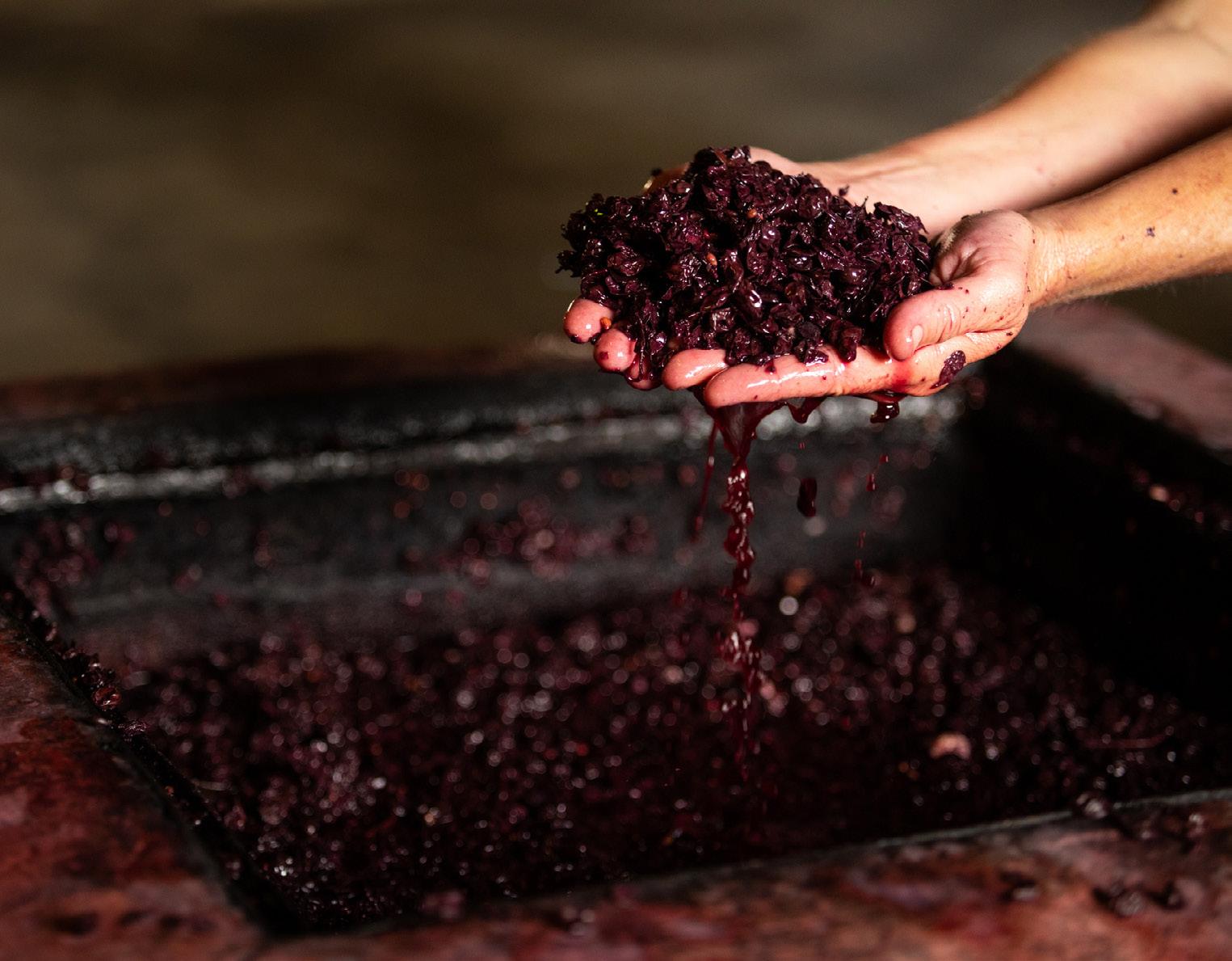
38 FEATURE ARTICLE Natural by Choice? Environmental by Nature ASI MAGAZINE APRIL 2024
Supporting Sustainability Through Networking: Sustainability in Drinks (SID) 2024
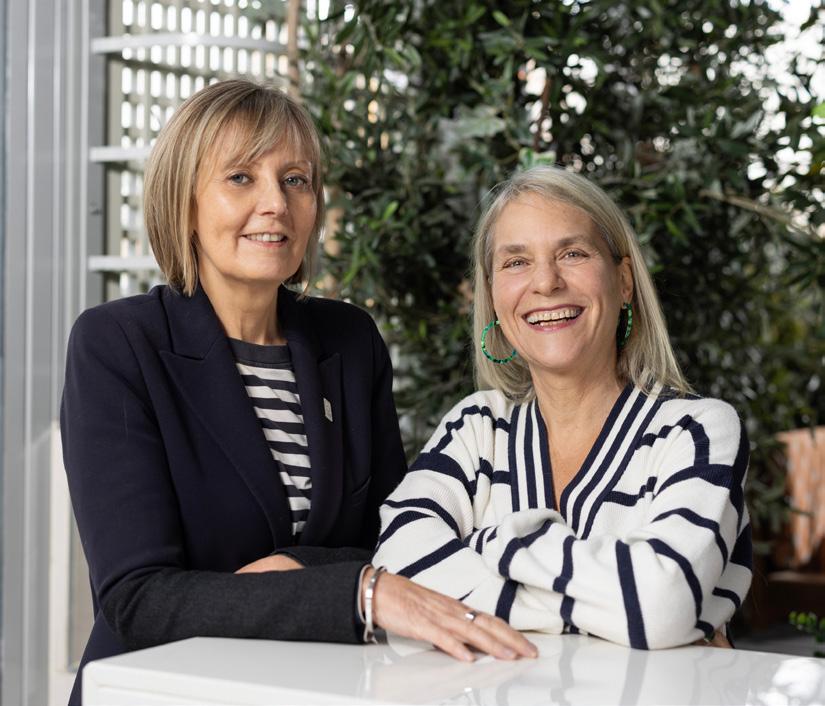
The Sustainability in Drinks (SID) 2024, is set to become a pivotal new conference and exhibition, focused on the drinks industry's approach to sustainability. Scheduled for October 15th at St Mary’s (Wyndham Place, York St.) in London, England, this exhibition aims to be an annual event, offering unmatched insights into sustainable practices within the drinks sector. Co-organiser, Janet Harrison says of the concept “we (along with co-organiser, Judy Kendrick) identified a gap in the market for a single sustainability event within the drinks trade.”
Kendrick and Harrison are seasoned drinks event professionals, notably co-founders of the People’s Choice Drinks Awards. The duo is being supported by sustainability experts Anne Jones and Fran Draper. Of her role Jones, who comes to the event after working in
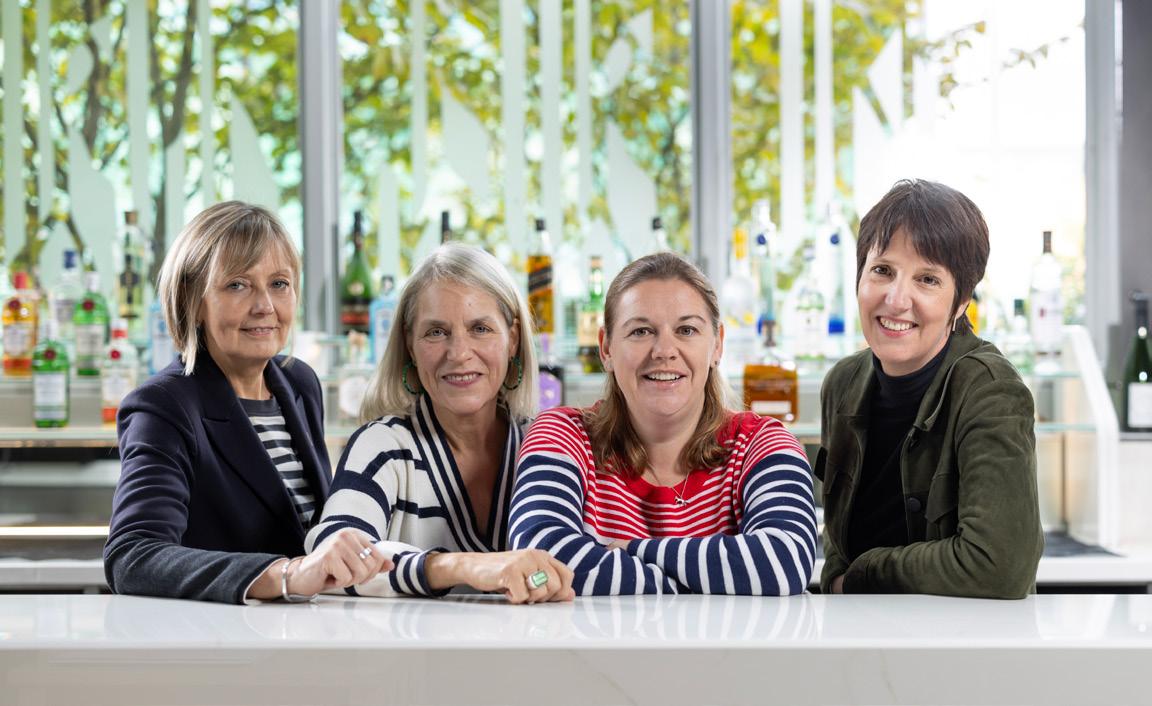
sustainability for major UK-based drinks retailers, managing and collaborating with exhibitors says, “we are using a vetting process, talking to potential exhibitors about their sustainability processes. We don’t expect perfection, but we expect to be going in the right direction.” Together, they promise SID will bring together producers, suppliers, and thought leaders from across the globe to foster collaboration and share advancements in sustainability. The event will feature a diverse exhibition free for trade and press, covering wine and general drinks production, packaging, logistics, and advisory services. Alongside, there will be masterclasses addressing current sustainability challenges. Founding Partners like Encirc and the Wines of Alentejo Sustainability Project underscore the event’s significance, aiming to facilitate a

shared platform for tackling climate change, legislative demands, and promoting sustainable supply chain solutions. SID represents a unique opportunity for the industry to collectively advance towards a more sustainable future.
“This unique annual event will provide a new opportunity for the drinks industry to come together and help each other understand the risks and harness the opportunities of a sustainable future – keeping up with the rapid pace of change” said co-creator Harrison, “We don’t want anyone to be excluded from the conversation and we aim for SID to be a springboard for international collaborations and networking. We’d like attendees to take back a practical plan of action for their businesses to help them move forward with their sustainability targets” she adds.
39 Supporting Sustainability Through Networking: Sustainability in Drinks (SID) 2024 FEATURE ARTICLE APRIL 2024 ASI MAGAZINE
Janet Harrison and Judy Kendrick
One Retailer’s Journey to Being Green: Québec’s SAQ’s Sustainability Efforts
For true change with respect to the wine industry’s commitment to the environment it will take sommeliers, restaurants and wine retailers collectively demanding the best from wineries. One retailer, the Société des alcools du Québec (SAQ) is on a transformative journey toward sustainability, making remarkable strides with its ambitious Sustainability Action Plan for 2023-2028. This initiative underscores the company's deep-rooted commitment to corporate responsibility, aiming to reshape its business model to align with sustainable and responsible practices.
Embracing Responsibility
Responsibility is woven into the fabric of SAQ's corporate values, driving the organisation to make decisions that benefit the collective good. Since 2008, SAQ has been at the forefront of sustainable development, guided by robust commitments and strategic plans. The latest strategic orientation places a strong emphasis on sustainability, aiming for zero emissions from its fleet and owned buildings by 2040. This bold vision is part of the SAQ's sixth action plan, focusing on responsible products, reducing environmental footprints, supporting the community, and enhancing sustainability processes and governance.
The Role of Sustainability in Wine Selection
Sustainability is a critical factor in SAQ's wine selection process. The organisation employs a
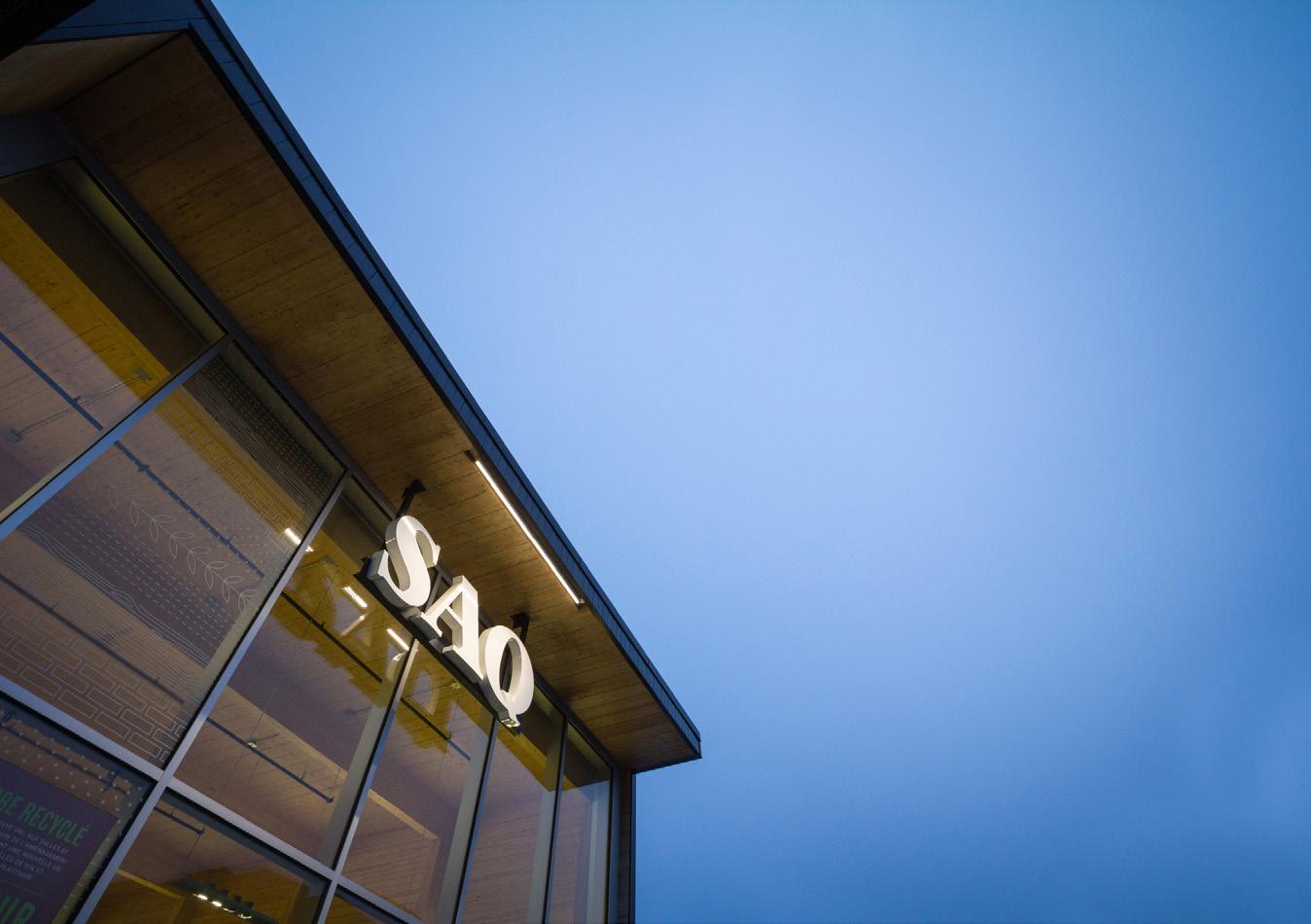
rigorous evaluation framework that factors in sustainability parameters such as organic and biodynamic certifications, and sustainable practice certifications. This approach signifies a broader commitment to environmental stewardship, extending to packaging standards that prioritise lightweight glass bottles and discourage overpackaging.
Certifications: A Badge of Sustainability
SAQ places significant value on certifications like Organic, Demeter, and BioVin, seeing them as essential indicators of eco-responsible practices. With over 3,000 certified products, SAQ is actively working to increase its offerings of ecoresponsible-certified products, demonstrating a clear commitment to sustainability within its selection process.
Innovative Packaging Solutions
In its quest for sustainability, SAQ encourages the use of alternative, eco-friendly packaging solutions such as Tetra Pak, aluminium cans, and PET bottles. This initiative is part of a broader strategy to reduce carbon emissions and support recycling efforts within Quebec. SAQ's goal is to increase the proportion of products in ecoresponsible packaging, reflecting a commitment to environmental sustainability and innovation.
Driving Decarbonisation
SAQ's sustainability efforts extend beyond packaging to include ambitious decarbonisation targets. The organisation aims to significantly reduce GHG emissions associated with packaging production and transportation. These efforts are integral to achieving SAQ's zero-carbon
40 FEATURE ARTICLE One Retailer’s Journey to Being Green: Québec’s SAQ’s Sustainability Efforts ASI MAGAZINE APRIL 2024
SAQ Store

objective by 2040, highlighting the critical role of sustainability in shaping the company's policies and practices.
Supporting Local: A Sustainable Strategy
The SAQ's commitment to sustainability is also evident in its support for local products. This approach not only reduces the environmental impact of transportation but also supports Quebec's economy and local entrepreneurs. The SAQ has created dedicated spaces for Quebec products in stores and online,
making it easier for consumers to identify and support local options.
Engaging Consumers in Sustainability
For sustainability initiatives to succeed, consumer engagement is crucial. SAQ recognises this challenge and is actively working to inform and inspire its customers about the importance of sustainable choices. Through various channels, including its podcast "Sous le bouchon", SAQ shares insights on eco-responsible products and packaging, highlighting sustainable brands and efforts to remove overpackaging.
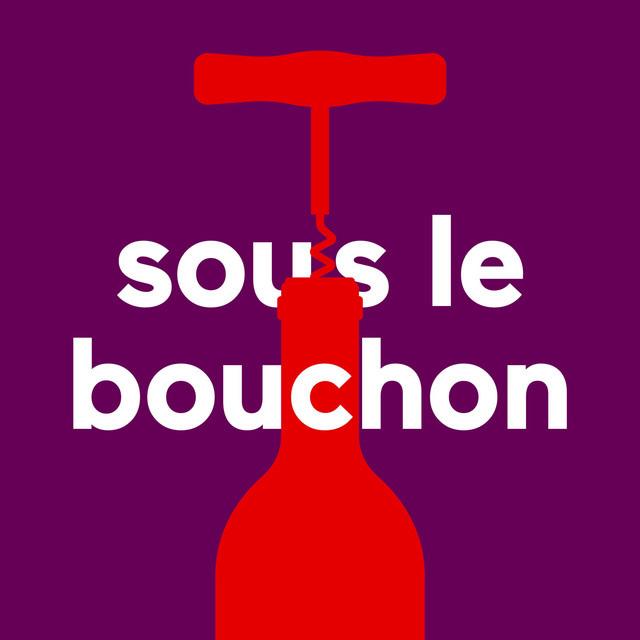
In the realm of big box retail wine stores, Canada’s liquor monopoly’s rank amongst the world’s largest wine retailers. Québec’s SAQ's Sustainability Action Plan is a testament to how a large retailer can create an unwavering commitment to environmental stewardship and corporate responsibility. By integrating sustainability into its core operations, SAQ is not only paving the way for a more sustainable future but also inspiring other retailers to join in the collective effort toward a greener planet.
Sous le bouchon podcast available on
SAQ Display
41 One Retailer’s Journey to Being Green: Québec’s SAQ’s Sustainability Efforts FEATURE ARTICLE APRIL 2024 ASI MAGAZINE

B-Corp: A holistic approach to sustainability
B-Corp certification represents a growing movement among businesses worldwide, including wineries, towards sustainability, ethical practices, and community involvement. B-Corp certified wineries are not just about producing exceptional wines; they're committed to higher standards of social and environmental performance, transparency, and accountability. From the sun-drenched vineyards of California to the historic estates of Europe and innovative wineries in Australia and South America, these pioneers are leading the way in sustainable viticulture. They're redefining success in the wine industry, showing that it's possible to create outstanding wines while benefiting the planet and supporting local communities.
ASI APPLAUDS THESE WINERIES EFFORTS TO SUPPORT OUR PLANET AND OUR PEOPLE:

A to Z Wineworks (Oregon, USA, May 2014)
Arc Winery LCC/David Hill Vineyard and Winery (Oregon, USA, October 2019)
Australian Vintage Ltd. (Australia, February, 2024)
Avignonesi SRL Soc. Agricola Societa Benefit (Tuscany, Italy, July, 2023)
Bainbridge Vineyards (Washington State, USA, August, 2018)
Benjamin Bridge (Nova Scotia, Canada, March, 2024)
Bonterra Organic Estates (California, USA, May, 2015)
Cartorgraph Wines (California, June 2020)
Château Maris (Languedoc, France, September, 2016)
Chehalem Winery (Oregon, USA, July, 2018)
Cielo e Terra (Veneto, Italy, March, 2020)
Cliff Family Winery & Farm (California, USA, April 2023)
Deep Down Wines (Marlborough, New Zealand, September, 2023)
Dolium Bodega Subterranea (Mendoza, Argentina, June, 2014)
Domaines Barons de Rothschild Lafite (Bordeaux, France, December, 2023)
Emiliana Vineyards (Chile, December, 2023_
Et Fille Wines (Oregon, USA, March, 2022)
Felton Road (Central Otago, New Zealand, January, 2024)
Feudi San Gregorio (Campania, Italy, June, 2022)
Hecht & Bannier (Provence, France, September, 2022)
LaGarde S.A. (Mendoza, Argentina, December, 2018)
Lubanzi (Western Cape, South Africa, December, 2018)
Madeira Wine Co. (Madeira, Portugal, December, 2022)
Maison Mirabeau (Provence, France, May, 2023)
The Morne Wine Company dba Brooks Wines (Oregon, USA, January, 2019)
Penedo Borges (Mendoza, Argentina, December, 2017)
Perlage Winery (Veneto, Italy, November, 2015)
Piper Heidsieck, Chardles Heidsieck and Rare
Chamapagne (Champagne, France, July. 2022)
Rathfinny Wine Estate (Sussex, England, April, 2023)
Ridgeview Estate Winery (Sussex, England, September, 2022)
River Road (California, USA, August, 2022)
Sokol Blosser (Oregon, USA, April, 2015)
Soter Vineyards (Oregon, USA, February, 2024)
Spottswoode (California, USA, July, 2020)
Stoller Family Estate (Oregon, USA, July, 2017)
Summerhill Pyramid (British Columbia, Canada, May, 2019)
Tasca d’Almerita (Sicily, Italy, March, 2023)
Trasiego Wines (Chile, December, 2019)
Thomson & Scott (England, January, 2020)
Townshend Cellar Inc. (Washington State, April, 2022)
The Uncommon (England, December, 2021)
Vina Concha Y Toro (Chile, December, 2020)
Vina Los Vascos (Chile, December, 2023)
Winderlea Vineyard & Winery (Oregon, USA, March, 2015)
42 FEATURE ARTICLE B-Corp: A holistic approach to sustainability ASI MAGAZINE APRIL 2024
Make Me a Match
Dining Sustainably with Regional Food and Wine Pairings
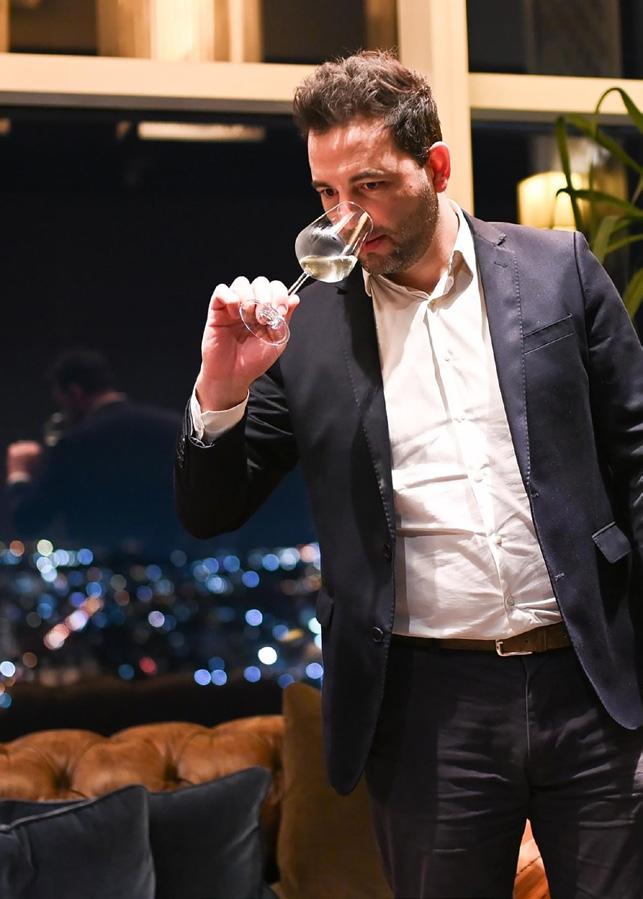

When it comes to sustainable dining, there is little better than pairing wine from a region with food from the same place. To reiterate an overused phrase “what’s grows together, goes together.” Here are some of our favourite local food and wine pairings. What are yours?
1. Sancerre and Crottin de Chavignol (goat cheese)
2. Sauternes and Foie Gras (seared duck liver)
3. Chianti Classico and Bistecca alla Fiorentina (grilled porterhouse steak)
4. Barolo and Risotto al Tartufo (slow cooked rice with truffles)
5. Rioja and Croquetas de Jamón (ham croquettes)
6. Manzanilla Sherry and Crispy Fried Seafood
7. Dão Tinto and Feijoada à Transmontana (bean and pork stew)
8. Mosel Riesling and Schweinshaxe (pork knuckle)
9. Oregon Pinot Noir and Grilled Salmon
10. South African Chenin Blanc and Cape Malay Chicken Curry
What others are saying:
Uruguay Tannat with Beef Tenderloin
"If we talk about Uruguayan wine, we must talk about Tannat, our flagship variety. One of my favourites is B3 Unique Parcel Tannat from Bouza winery accompanied by local beef loin, sliced and topped with fresh mozzarella and accompanied with roast potatoes. The aromas of black fruits, spices and menthol, together with the wine’s juicy tannins and balanced acidity, make this wine a perfect regional food pairing".
- Sebastián Menéndez, President of the Association of Sommeliers in Uruguay
Ribera del Duero Tinto and Cordero Asado
“There are few better combinations than the robust flavours of Ribera del Duero with the succulent flavours of Cordero Asado, roast suckling lamb, cooked in the wood ovens of the region’s traditional restaurants. The only thing better I’ve enjoyed is when having local lamb grilled over Tempranillo vine cuttings, an experience I’ve enjoyed on a few occasions thanks to the generosity of Bodegas Casajus, in the little village of Quintana del Pidio. Of course, Nova Scotia Traditional Method sparkling wine and local oysters are something to enjoy, at least once in your life, too”.
- Mark DeWolf, ASI Magazine Editor
Boudin noir in Pommard
“The best hyper local pairings for me are usually super simple. Some of my favourite standouts include potted boudin noir in Pommard with a glass of Pommard, warm goat cheese bruschetta with caramelised onions, walnuts and honey in Jerez with Oloroso, a simple plate of truffle pasta with local Chianti in Volpaia, crispy fried seafood in Sanlucar with Manzanilla, fresh Carpentras strawberries with feta and a local rosé”.
- Krys Roman, Sommelier, Noir and Pommard. Andrew Peller Ltd., Ontario, Canada
Rilettes de Tours with Montlouis-sur-Loire
“My favourite hyper local pairings would definitely be some rillettes de Tours with a glass of barrel fermented dry Chenin Blanc from Montlouis”.
- Henri Chapon MS, Sommelier, Tours-de-Loire, Rilettes de Tours and Montlouissur-Loire
Sebastián Menéndez
43 MAKE ME A MATCH! Dining Sustainably with Regional Food and Wine Pairings APRIL 2024 ASI MAGAZINE
Member Association Spotlight
Sommellerie After the Velvet Revolution:
The Association of Sommeliers of the Slovak Republic


In August 2000, the Association of Sommeliers of the Slovak Republic was established, marking a significant turning point in the country's wine culture, which had previously been stifled under socialist rule. By 2002, this burgeoning organisation proudly joined the global ranks of the Association de la Sommellerie Internationale (ASI) during the ASI General Assembly in Chile, highlighting its commitment to enhancing the sommelier profession. The Association’s current President, Beáta Vlnková, reflects on that period: “After the Velvet Revolution in 1989, it was so exciting to finally have a chance to discover wines.” Today, under the leadership of Vlnková and supported by board members Rastislav Šuták, Ján Kubaľa, Gabriel Kollár, Martin Fodor, and Secretary General Mária Brezinová, the association boasts 80 dedicated members. Their journey from humble beginnings to a flourishing community embracing a diverse global wine heritage encapsulates a remarkable story of passion, education, and cultural evolution. This narrative is not just about wine; it's a testament to a nation's transformative journey towards embracing global viticulture and the refined art of sommellerie.
Sommellerie After the Velvet Revolution: The Association of Sommeliers of the Slovak Republic 44 MEMBER ASSOCIATION SPOTLIGHT ASI MAGAZINE APRIL 2024
Young Somm Contest Wine Tasting
ASI interviewed Beáta Vlnková who, in addition to her role as President of the Association of Sommeliers of the Slovak Republic, is Secretary General of ASI, about the association’s rise in stature over the past 20 years.
ASI: How do you measure success for your association?
Beáta Vlnková (BV): It all begins with educational opportunities. Twenty years ago, not many Slovaks spoke English, which made learning about wine difficult at the time. To progress, it required us to launch an educational sommelier certification programme in the Slovak language. I would be remiss not to mention the help of Annemarie Foidl, president of the Austrian sommelier association, and Ivo Dvořák, president of the Czech sommelier association, who, along with the late Gérard Basset, helped us a lot in the beginning. Gérard came to Slovakia for one of our events simply to explain the sommelier profession and how important education is.
I fondly recall an engaging exchange between an audience member and Gérard during a session in the auditorium. The question came from the owner of a renowned restaurant, who expressed his concern: "I'm willing to invest a substantial amount of money in my sommelier, but what if he leaves after a few years?" Gérard responded thoughtfully, "Yes, he might leave, but he will always remember where he got his start, where he was given a chance. He will carry that with him and share it for the rest of his life."
I would also like to extend my gratitude to Giuseppe Vaccarini, codirector of the Exams and Education Committee. Giuseppe generously visited Slovakia several times on a pro bono basis to teach us the nuances of wine tasting, the proper ways to serve wine, and how to compete in sommelier contests.
“It’s crucial for them to realise that a sommelier is not just a staff member but a key professional who enhances wine sales and enriches the dining experience.”

His contributions have been invaluable in elevating our local wine culture.
ASI: What is the mandate of The Association of Sommeliers of the Slovak Republic and how have you been successful in accomplishing these goals?
BV: The primary goal of our association is to support the profession of a sommelier. Currently, the HORECA sector in our small country is facing challenging times. There is a noticeable shortage of sommeliers, many of whom left the industry after the Covid pandemic. Additionally, the level of appreciation they receive from owners and employers is not where it needs to be. As a result, as soon as a sommelier becomes skilled, they often leave Slovakia to work abroad.
Our strategy involves educating not only sommeliers but also the owners of hotels and restaurants about the critical role a sommelier plays. It's crucial for them to realise that a sommelier is not just a staff member but a key professional who enhances wine sales and enriches the dining experience. This understanding is vital for elevating the profession and ensuring its recognition and sustainability within the local market.
ASI: How has The Association of Sommeliers of the Slovak Republic benefitted from being part of ASI?
BV: Immensely. ASI has been an inexhaustible source of education, experience, ideas, and enthusiasm, especially in recent years. Just to mention a few of the resources, we have access to: the ASI guidelines, ASI magazine, and educational
45 MEMBER ASSOCIATION SPOTLIGHT Sommellerie After the Velvet Revolution: The Association of Sommeliers of the Slovak Republic APRIL 2024 ASI MAGAZINE
Beáta Vlnková
content found on ASI’s social media platforms. Most importantly, we are part of an international family. We have friends all over the world, so we never feel isolated. There is always someone, somewhere, ready to offer advice, a helpful hint, or very often, open a good bottle of wine.
ASI: How does education fit within your scope of responsibilities?
BV: It is one of the most important aspects of what we do. We organise courses for young sommeliers all over Slovakia at the hotel schools. Every year we also organise the Best Young Sommelier Competition of Slovakia. The last one was held just last month (March 2024). It was such a pleasure to see the young sommeliers serve and speak about the wine at a very high level.
ASI: How do you keep such a large membership engaged with the association?
BV: Communication is the key. We send out regular newsletters reminding them of courses, wine tasting opportunities, contests, etcetera. Lately, we have also

“There is always someone, somewhere, ready to offer advice, a helpful hint, or very often, open a good bottle of wine.”

launched blind tasting sessions for sommeliers focused on a grape variety or a wine region.
ASI: What’s the future of the Association of Sommeliers of the Slovak Republic?
BV: In June, we organise a nomination contest to determine who we will send to the ASI Best Sommeliers of Europe, Africa, and Middle East contest. We always try to make this event exciting and entertaining. We also intend to launch a new educational programme consisting of lectures throughout the year. Sommeliers will be able to choose which ones they want to attend. My secret wish is to organise a local bootcamp in the future.
Somm Training
Sommellerie After the Velvet Revolution: The Association of Sommeliers of the Slovak Republic 46 MEMBER ASSOCIATION SPOTLIGHT ASI MAGAZINE APRIL 2024
Young Somm Finalists

Is sustainability the answer for Bordeaux?
By Xeniya Volosnikova
Conseil Interprofessionnel du Vin de Bordeaux (CIVB) declared an ambitious goal: 100% of the vineyards should be environmentally certified by 2030. This includes various national and international certifications available for producers in the region: organic, biodynamic, High Environment Value, Terra Vitis, ISO 14001, AGRI Confiance, AREA – just to name a few.
47 Is sustainability
FEATURE ARTICLE APRIL 2024 ASI MAGAZINE
the
answer for Bordeaux?
At the same time the region is facing challenging times: sales have been decreasing recently in some key markets (China, USA, Russia) with no guarantee for a drastic change in the foreseen future. The very generous vintages of 2019, 2020, 2022 (and 2023 is also looking quite voluminous) eventually led to overproduction and excessive stocks. Let’s forget the pandemic, wars, supply chain crisis, overall global instability… Three government vine pull scheme of 10 000 hectares of vines in Bordeaux seems like a logical conclusion to the region’s misfortunes.
Did CIVB turn to sustainability to improve the region’s image and boost the sales (especially among younger generations)? We’ve been convinced by multiple consumer studies that we grew more conscious of what is in the bottle – where it comes from, how it’s made, if the winery is re-using their water, are they treating their seasonal workers well, etc. Most articles between 2019 and 2021 on wines labelled as sustainable revealed most people were ready to pay extra to buy a bottle of wine that respects their values. Now, with more and more people feeling uncertain about the future, will price consciousness take over? With cost of living going up, consumers are not certain anymore if they want to pay an extra dollar, euro for that wine with the biodynamic label they like so much.
Financial matters, indeed, often spark the debates on sustainable vs conventional in terms of cost. Many producers would tell you that they don’t need the environmental certification as they have already implemented this or that sustainable approach, and it’s just a paper and expense for them. But is it really more expensive to be organic or biodynamic rather than conventional? During the En Primeurs 2024 week discussing this matter among others with

Caroline Frey (Château La Lagune in Bordeaux, Paul Jaboulet Aîné in the Rhône, Château Corton C in Burgundy and Mon Jardin Secret, Switzerland) she admits that conversion to organic or biodynamic needs initial investment, but in long-term the approach pays off: the yields can go down at first, but then the vine adapts and improves both in terms of yield and its quality. Caroline also mentions that organic and biodynamic are more prepared to weather fluctuations versus conventional. A very practical example: in an organic vineyard thanks to cover crop the tractors can work the vineyard shortly after a rain, whereas in a conventional vineyard, due to elimination of almost all vegetation, the tractors will get stuck in the mud.
Caroline has been an early adopter of biodynamic approach in Bordeaux, having started at La Lagune in 2004, she has
been long experimenting with multiple solutions to adapt to climate change. It’s curious to see the feedback on new varieties introduced in Bordeaux a while ago as enough time has passed since the early experimental plantings to already see (and taste) some first results. Will they be changing the face of Bordeaux wine? Maybe not in the way we expected: Caroline says, “the results of their experiments with Castet (a longforgotten local variety that has been re-introduced to combat climate change) were not what they expected. The variety did not show the expected draught-resistance or much sought after ability to keep the acidity in a warmer year, but maybe others will?” I have counted several Chardonnays present at different tastings, labelled Vin de France at the moment, so who knows… Definitely, the trend will not only be limited by introducing new grape varieties but turning to other styles and categories. White wines
48 FEATURE ARTICLE Is sustainability the answer for Bordeaux? ASI MAGAZINE APRIL 2024
Caroline Frey tasting grapes in the Biodynamic vineyard
produced in the Médoc introduction and expanded Crémant de Bordeaux production, have both gained big fanbases.
When talking about sustainability we often forget another acute problem - the social sustainability – in a rural area like Médoc or Saint-Émilion where labour shortages workforce is a continuous struggle for wineries. The area around La Lagune used to be self-sufficient, but now is seen as an extension of Bordeaux. People (especially a younger generation) are choosing to work in the city. Many areas, like Pauillac, face depopulation. On top of it – working in a vineyard/winery requires hard physical labour, which lacks appeal for many from younger generations, nor do they stay in the same job for prolonged periods. One of the ways to combat this is to engage the local population, especially those just entering the workforce by holding masterclasses and talks about sustainability (often outside the wine industry) to educate and inspire, as Caroline has been trying to do over the past few years.
I find it a positive trend to notice some frowns here and there upon a random heavy weight bottle. Once a trademark 2 kg bottle is now considered ‘mauvais ton’. Don’t be fooled, there’s still quite a few of them. But the mindset has shifted. Producers would often proudly mention that the bottle is lighter, or made from a proprietary glass, or they are looking at making it lighter.
Finally, being sustainable is quite different region by region. Caroline, having vineyards spread across France and even Switzerland, admits that the challenges are diverse “in Bordeaux there’s more maritime climate pressure (spring frosts, heavy rainfall at harvest) whereas in the Rhône it’s more strong winds, risks of draught. Also, the Rhône vineyards are more fragmented and more difficult to reach, whereas Bordeaux vineyards are closer to each other and on a flatter terrain which makes the logistics easier and more effective.”
An important part of sustainability is the calculation of carbon footprint
– to understand the current situation and what can be done - but it’s not always clear how to measure it. Chateaux can be super sustainable and integrate all the modern technologies and practices, but then comes the traditional En Primeur week, and hundreds of visitors are driving in small groups for private tastings across the region during the event. There are efforts to centralise the tastings in one winery for a sub-region/ commune, but many exclusive tastings remain in fashion.
When discussing sustainability and its viability, numerous considerations come into play. Merely focusing on environmental concerns falls short. Recent years have served as a valuable education, signaling that the era of rhetoric on sustainability has passed. Action is now paramount. Bordeaux is definitely on the way to be more sustainable, but that requires it to become a new Bordeaux. More exciting for sommeliers and wine enthusiasts altogether!
“Recent years have served as a valuable education, signaling that the era of rhetoric on sustainability has passed.”
 Biodynamic preparation vineyard
Biodynamic preparation vineyard
49 Is sustainability the answer for Bordeaux? FEATURE ARTICLE APRIL 2024 ASI MAGAZINE
Wine Paris 2024: Sustainability and innovation
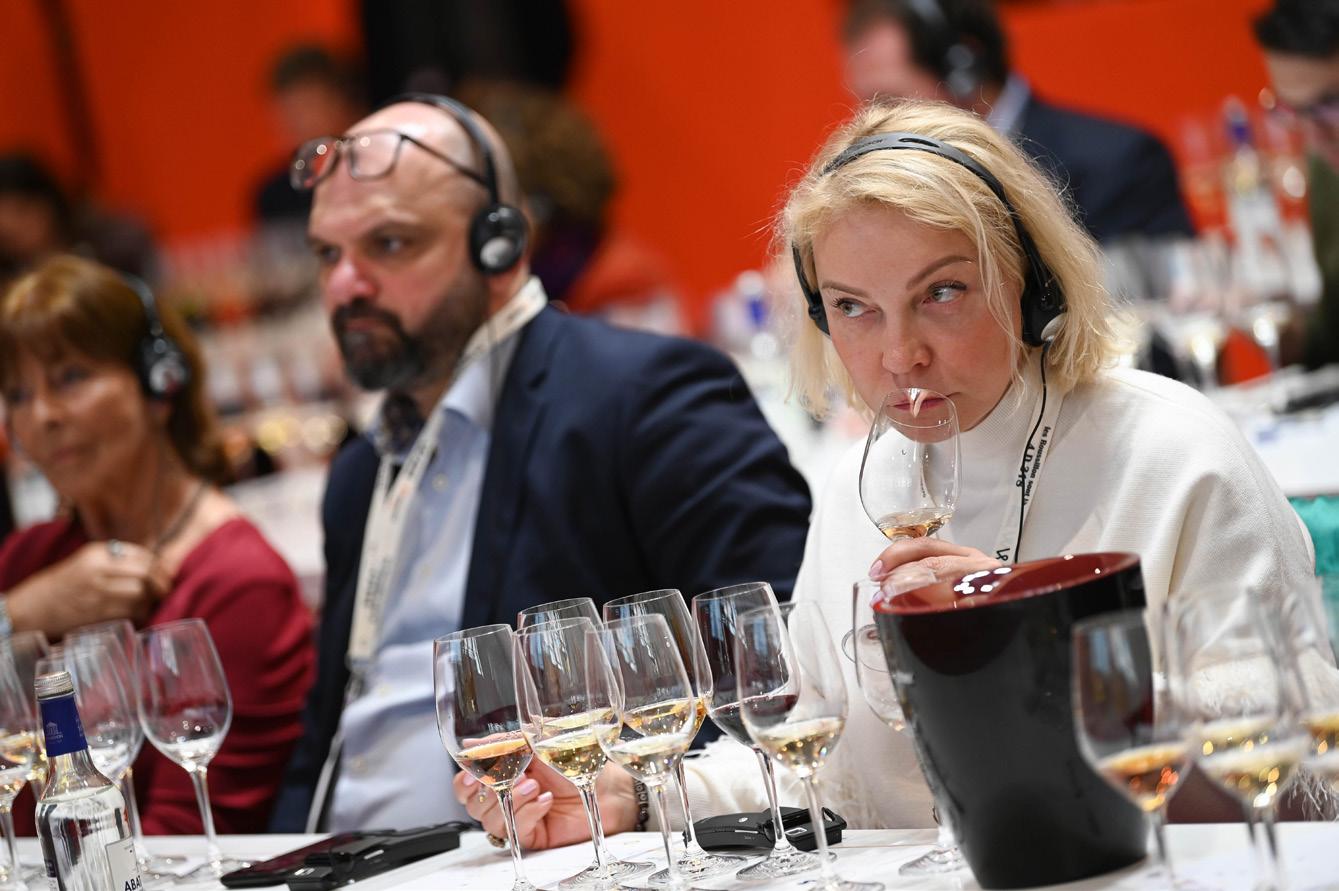
The event's rich agenda featured over 100 seminars across three days, each dissecting unique challenges and opportunities in an industry grappling with global warming, shifting consumer demands, and the digital revolution. Highlighting the event were discussions on transformative solutions guiding wineries and businesses toward a sustainable future, focusing on eco-friendly practices and technological advancements.
“A standout moment was the Gérard Bertrand masterclass, celebrating 100 years of biodynamic farming.”
A standout moment was the Gérard Bertrand masterclass, celebrating 100 years of biodynamic farming. Bertrand shared insights on how two decades of biodynamic practices have enhanced the resilience and quality of his wines, promoting soil health and biodiversity across his estates. Further seminars delved into carbon management and regenerative viticulture, offering practical sustainability tips for winemakers, from staff training to changing farming practices to reduce carbon footprints.
The discussions extended to addressing consumer demands for sustainability, with notable contributions from Waitrose through their "Loved & Found" strategy, aiming to reduce carbon footprints by employing sustainable materials and focusing on cork closures to eliminate single-use plastics.
Moreover, the event explored the burgeoning no/low alcohol segment, with Robert Joseph, 2019
Wine Paris 2024 marked a pivotal moment in the wine industry, showcasing an unprecedented convergence of sustainability and innovation. With exhibitor numbers soaring to 4,074 from 48 producer countries—a 53% increase in international exhibitors—and visitor attendance up by 14% to 41,253, including 41% international visitors from 137 countries, the event underscored the global wine community's commitment to future-forward practices despite the looming shadow of a larger carbon footprint.
ASI Best Sommelier of the World Marc Almert, and Dominique Laporte, 2004 Best Sommelier of France and no-alcohol wine producer. The trio discussed innovative processes that preserve the essence of wine without alcohol, responding to decreasing wine consumption trends and supporting wineries' sustainability.
Reflecting on Wine Paris 2024, it's evident that sustainability isn't just a trend but a central pillar for the wine industry's future. The event not only showcased the industry's innovative responses to environmental and digital challenges but also emphasised the collective effort required to navigate these changes successfully. As the industry moves forward, unity and shared learning emerge as key themes, ensuring that wine trade fairs like Wine Paris continue to drive progress, sustaining both the industry and the environment.
50 FEATURE ARTICLE Wine Paris 2024: Sustainability and innovation ASI MAGAZINE APRIL 2024
Member News
New Zealand’s Celia Hay One of New Zealand’s
TOP 50
New Zealand’s TOP 50 most influential & inspiring women in food & drink is an annual award announced on International Women’s Day. Celia Hay, director of the New Zealand School of Food and Wine, author of the New Zealand Wine Guide and President of New Zealand Sommeliers and Wine Professionals has been recognised for her on-going work to inspire and help people create exciting and meaningful careers in hospitality, wine, and tourism.
“We all love to eat out and savour well-prepared meals, intriguing beverages, wines and cocktails but we need to remember that AI (artificial intelligence) won’t replace the human connection that we find in restaurants, bars and hotels. It is important to inspire young people to become the next generation of restaurateurs, sommeliers, and managers. This is what motivates me: sharing the hospitality dream,” comments Celia Hay.
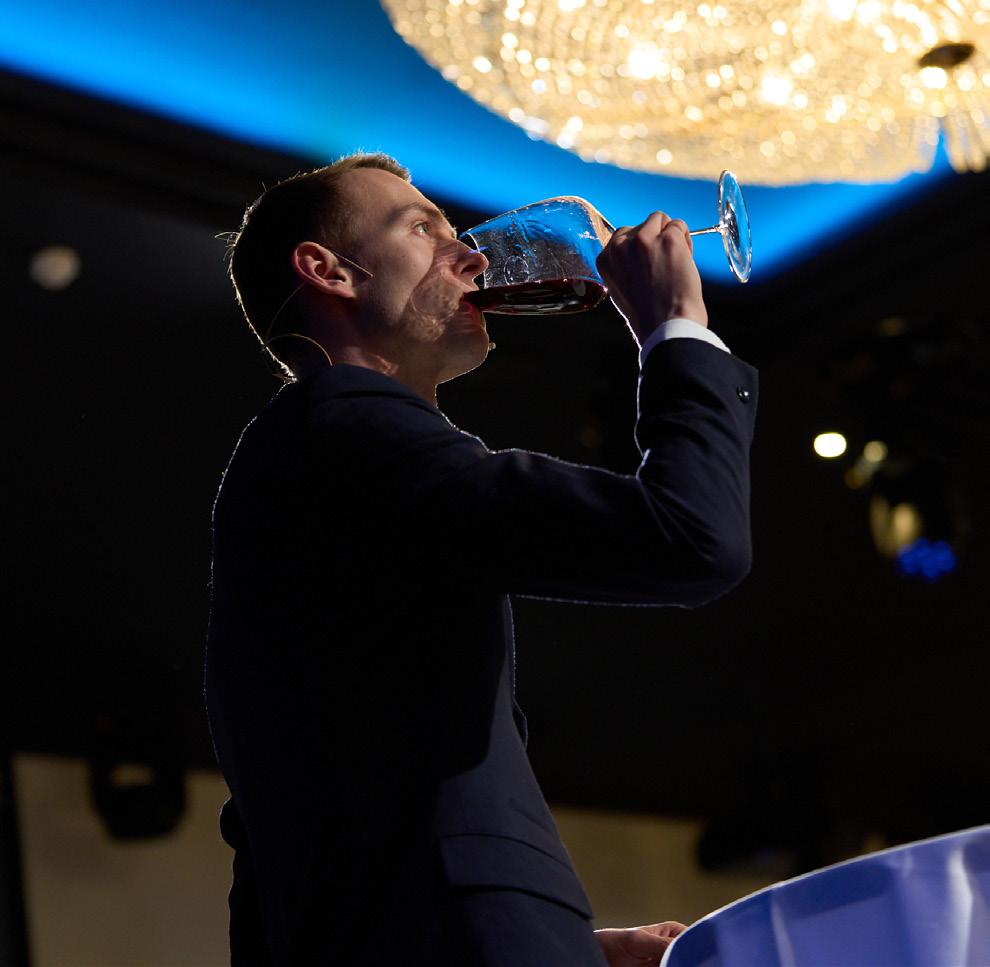
ASI Hosts Diploma Exam
Nikolai Haram Svorte is
Norway’s Best
The Norwegian Sommelier Championship contest was held earlier this year at Thon Hotel Bristol in Oslo. The competition put candidates through a series of rigorous tasks spanning preliminary rounds, semi-finals, and finals. Preliminaries were conducted on December 18th across Oslo, Bergen, Stavanger, and Trondheim, with ten of the initial twenty candidates advancing to the semi-finals on February 4th. This year’s winner, Nikolai Haram Svorte, expressed immense satisfaction and relief after being announce the victor, highlighting the importance of preparation and focus. Liora Levi, president of the Norwegian Sommelier Association, commended the high level of knowledge and service, particularly praising the finalists.
On March 4, sommeliers around the world challenged themselves to attain the coveted ASI Sommelier Diploma. The ASI Sommelier Diploma was created in 2012 to promote the overall education, and knowledge of sommeliers and harmonise their skill level worldwide. This year, Diploma exams were held in Australia, Austria, Canada, Chile, Croatia, Cyprus, Finland, France, Greece, Japan, Korea, Luxembourg, Netherlands, Poland, Romania, Serbia, Singapore, Spain, South Africa and the UK.
This year, 78 sommeliers passed the examination with 26 achieving Bronze, 38 achieving Silver, and a further 14 achieving the coveted Gold standard. To date, 513 sommeliers have successfully qualified for the Diploma, recognising them as some of the most accomplished and gifted sommeliers in the world.
 Best Sommelier of Norway
Best Sommelier of Norway
51 MEMBER NEWS APRIL 2024 ASI MAGAZINE
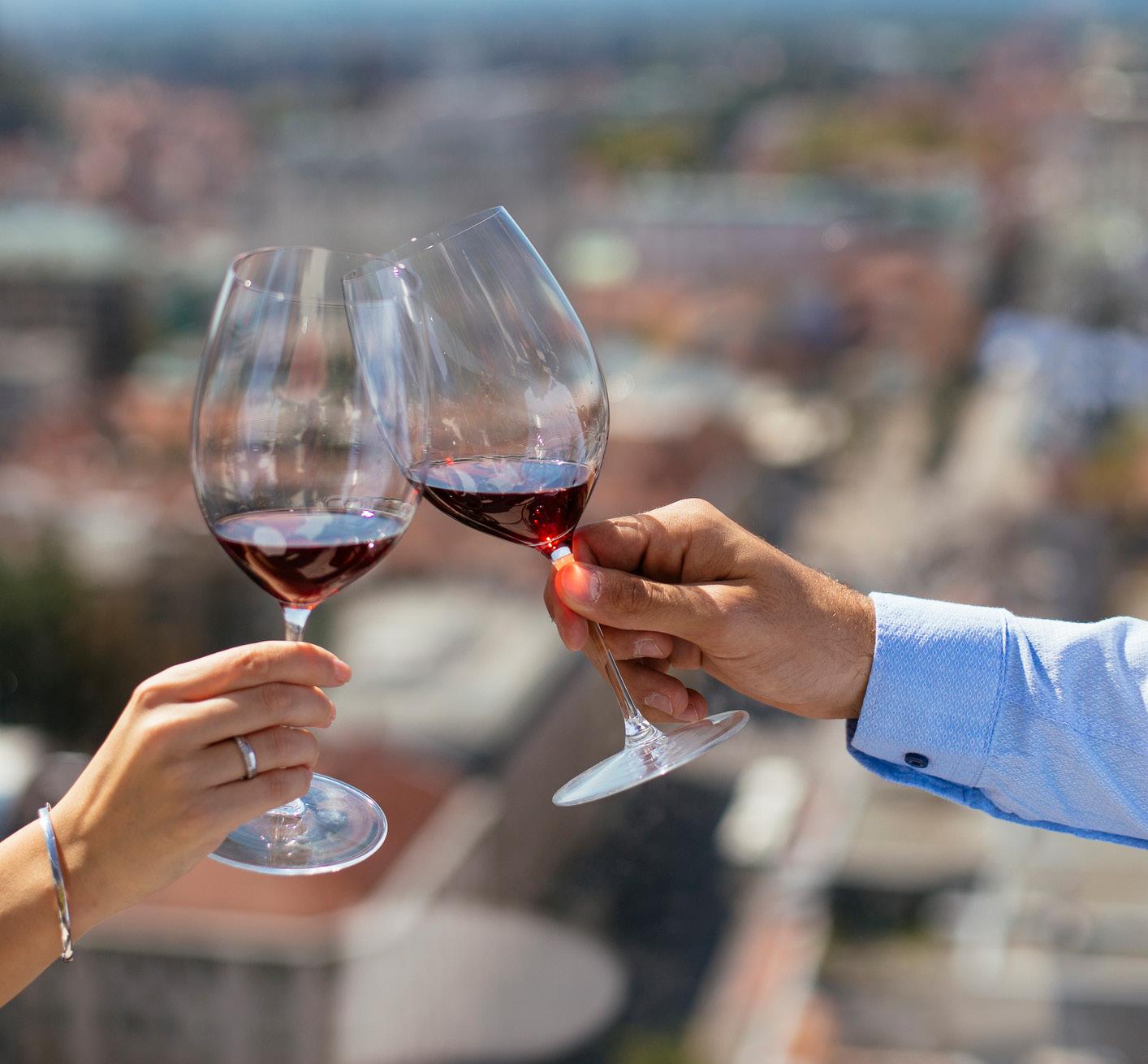
BELGRADE, SERBIA
NOV 11 - 15
ASI CONTEST BEST SOMMELIER OF EUROPE & AFRICA
1969 - 2024












 William Wouters, President ASI
William Wouters, President ASI

 Policulture - Centenary olive trees - Galega
Policulture - Centenary olive trees - Galega




















 Le Roi van de Vyver
Le Roi van de Vyver



 Joris Gutierrez Garcia
Craig Beattie
Hello Beasty Kitchen
Joris Gutierrez Garcia
Craig Beattie
Hello Beasty Kitchen





 We went around the globe to discover three restaurants that are redefining sustainability in their kitchens and on their dining room floor.
Mil Salón (Photo: Gustavo VIvanco)
We went around the globe to discover three restaurants that are redefining sustainability in their kitchens and on their dining room floor.
Mil Salón (Photo: Gustavo VIvanco)



 Silo
James Pritchard
Silo
James Pritchard


 Black Estate
Black Estate
















































 Biodynamic preparation vineyard
Biodynamic preparation vineyard


 Best Sommelier of Norway
Best Sommelier of Norway





